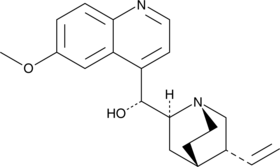Parasite
Antiparasitics are a class of medications which are indicated for the treatment of parasitic diseases such as nematodes, cestodes, trematodes, and infectious protozoa.
Ziele für Parasite
Produkte für Parasite
- Bestell-Nr. Artikelname Informationen
-
GC38612
Licoflavone B
Licoflavon B ist ein aus Glycyrrhiza inflata isoliertes Flavonoid, das S.
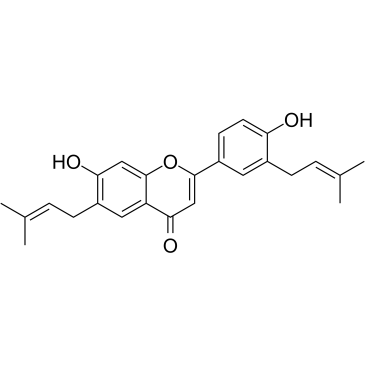
-
GC65292
Lotilaner
Lotilaner ist ein Parasitizid und wirkt als potenter nicht-kompetitiver Antagonist der GABACl-Rezeptoren von Insekten mit einem IC50-Wert von 23,84 nM fÜr den GABA-Rezeptor von Drosophila melanogaster.
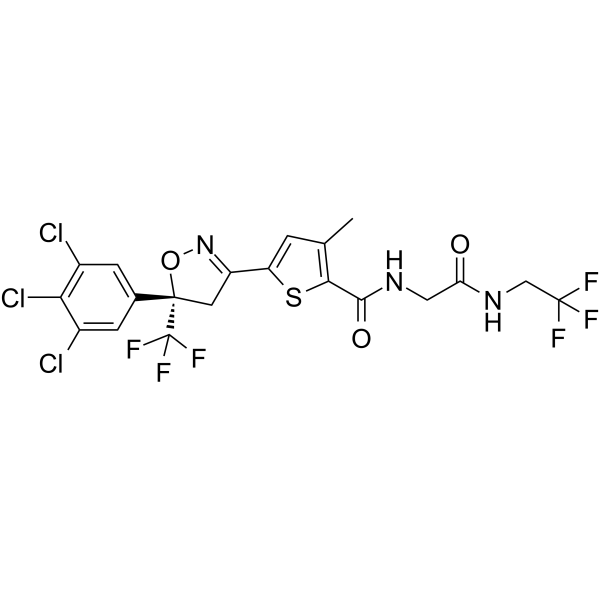
-
GC36493
Ludaconitine
Ludaconitin, isoliert aus Aconitum spicatum (Bruhl) Stapf, zeigt eine AktivitÄt gegen Leishmaniose mit einem IC50 von 36,10 μg/ml.
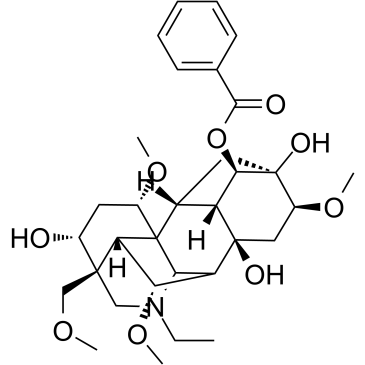
-
GC61832
Lufenuron
Lufenuron ist ein lipophiles Benzoylharnstoff-Insektizid und ein Chitinsynthesehemmer, der zur BekÄmpfung von FlÖhen und FischlÄusen eingesetzt werden kann.
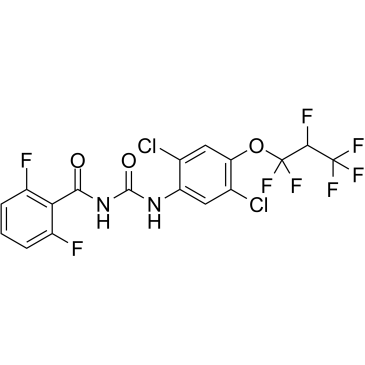
-
GC32152
Lumefantrine (Benflumetol)
Lumefantrin (Benflumetol) ist ein Malariamedikament, das in Kombination mit Artemether verwendet wird.
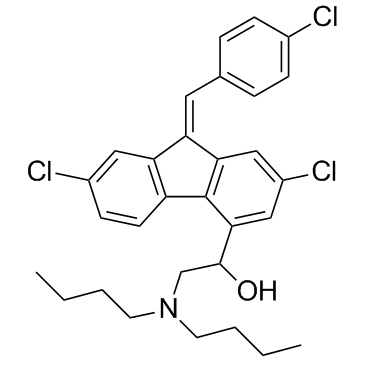
-
GC30378
Lumefantrine D18 (Benflumetol D18)
Lumefantrin D18 ist das mit Deuterium bezeichnete Lumefantrin, ein Malariamittel.
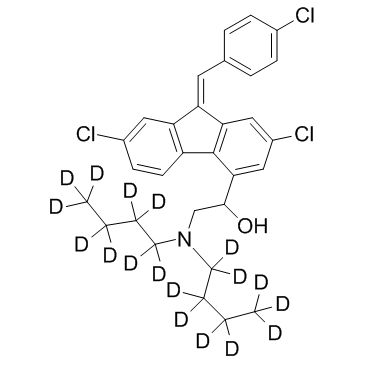
-
GC64363
Lumefantrine-d9
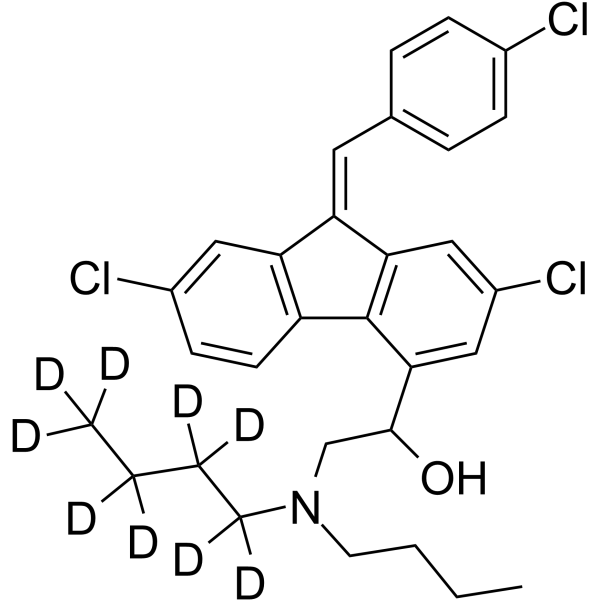
-
GC36494
Lupenone
Lupenon, isoliert aus Rhizoma Musae, gehÖrt zu den Triterpenoiden vom Lupantyp.
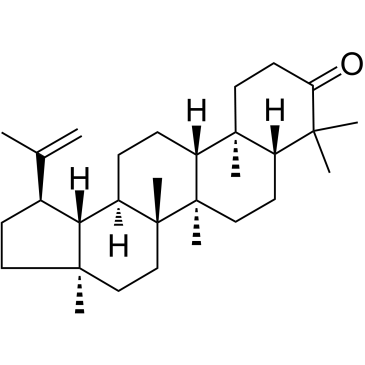
-
GC64282
LXE408
LXE408 ist ein oral aktiver, nicht-kompetitiver und Kinetoplastid-selektiver Proteasom-Inhibitor.
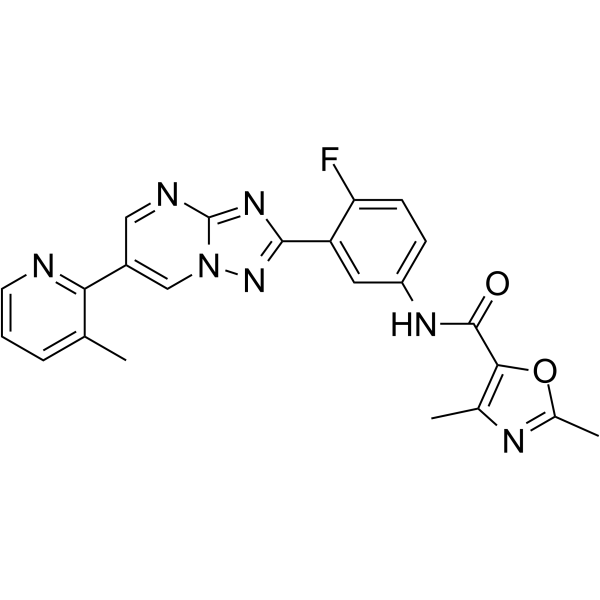
-
GC19240
MBP146-78
MBP146-78 ist ein potenter und selektiver Inhibitor von cGMP-abhÄngigen Proteinkinasen.
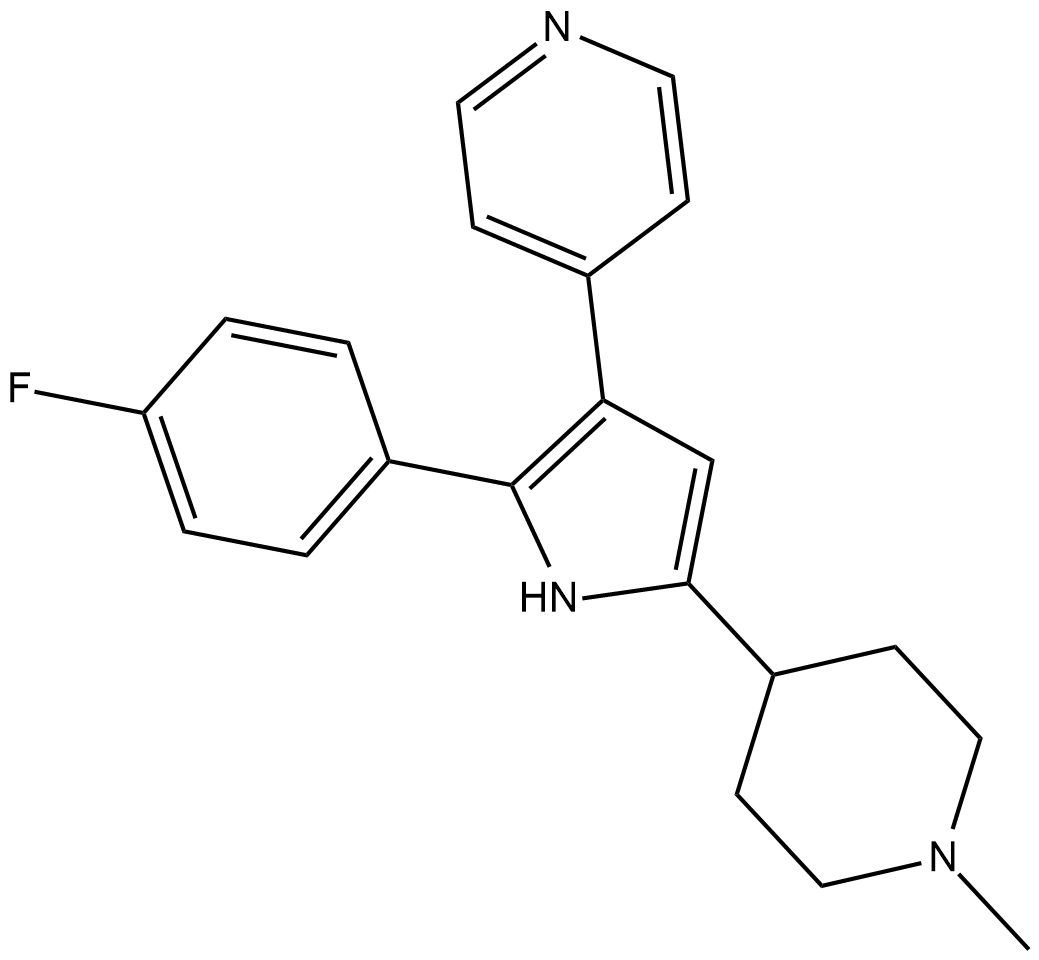
-
GC17649
Mebendazole
Mebendazol ist ein hochwirksames Antihelminthikum mit breitem Wirkungsspektrum, das zur Behandlung von Nematodenbefall indiziert ist; wurde als Hedgehog-Inhibitor gefunden.
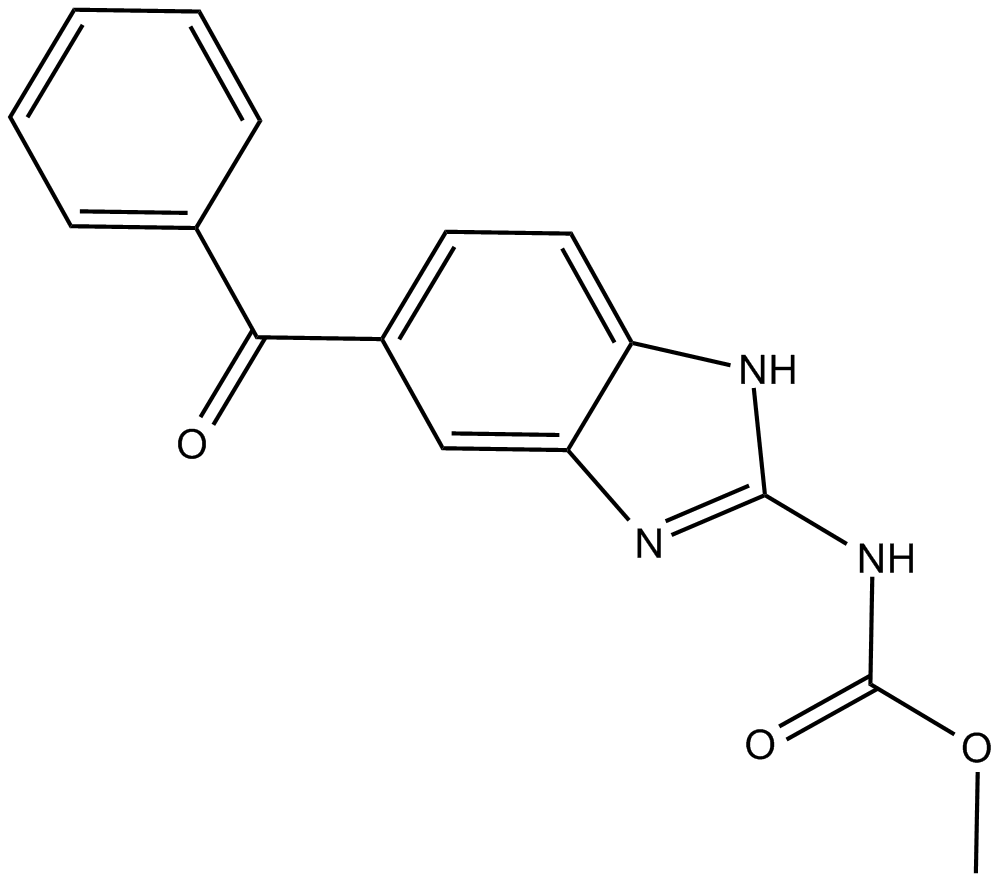
-
GC15854
Mefloquine hydrochloride
An antimalarial compound
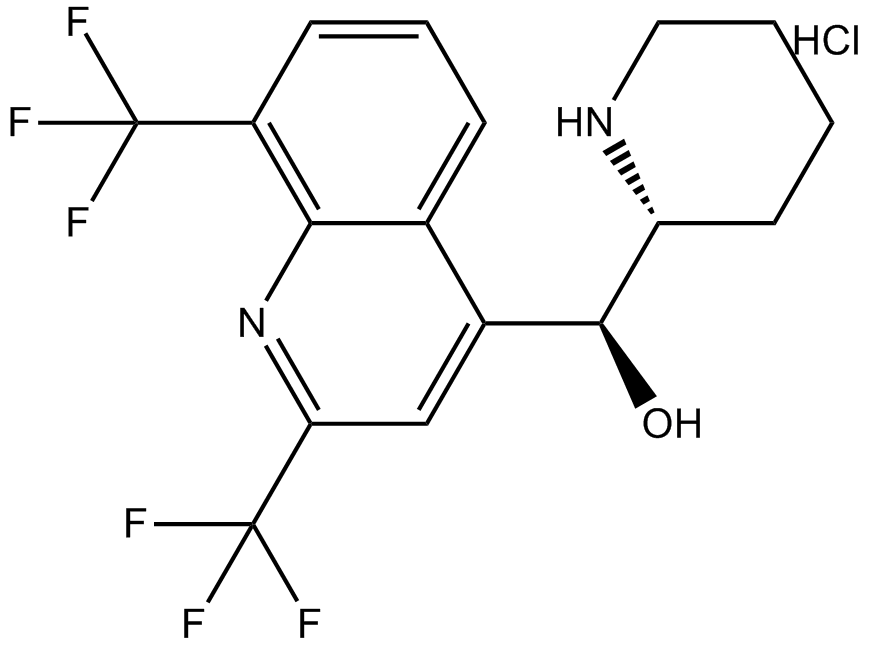
-
GC66018
Melarsomine dihydrochloride
Melarsomindihydrochlorid ist eine dreiwertige Arsenverbindung, die als Adultizid verwendet wird. Melarsomindihydrochlorid kann zur Erforschung der Herzwurmkrankheit des Hundes und anderer Helmintheninfektionen verwendet werden.
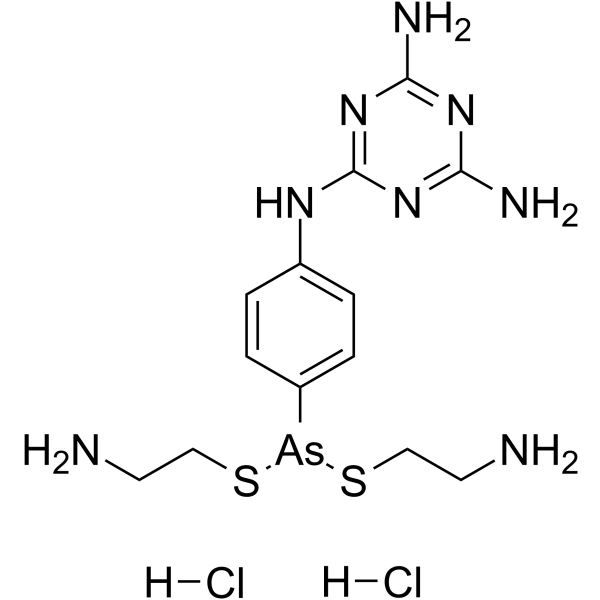
-
GC32357
Melarsonyl (Melarsonic acid)
Melarsonyl (MelarsonsÄure) (MelarsonsÄure) ist ein Anthelminthikum, das Parasiten stark hemmen kann.
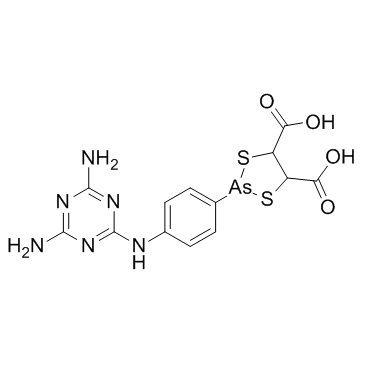
-
GC61422
Menthone
Menthon, ein aus Pflanzen extrahiertes Monoterpen und MenthaÖl mit starken antioxidativen Eigenschaften.
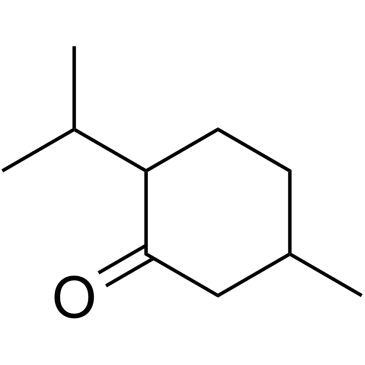
-
GC34665
Metaflumizone
Metaflumizon ist ein Semicarbazon-Insektizid und wirkt als starker Natriumkanalblocker.
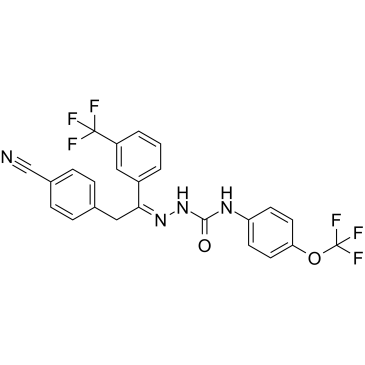
-
GC32102
Methoprene (ZR-515)
Methoprene (ZR-515), ein Nachahmer des juvenilen Wachstumshormons von Insekten, ist ein wachstumsregulierendes Insektizid, das seine ToxizitÄt gegenÜber Zielorganismen manifestiert, indem es als juveniler Hormonagonist wirkt.
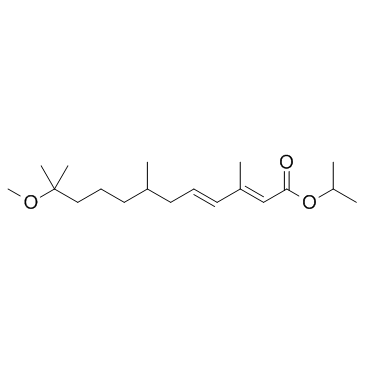
-
GC30051
Methylene Blue (Basic Blue 9)
Methylenblau (Basic Blue 9) ist ein Inhibitor der Guanylylcyclase (sGC), der Monoaminoxidase A (MAO-A) und der NO-Synthase (NOS).
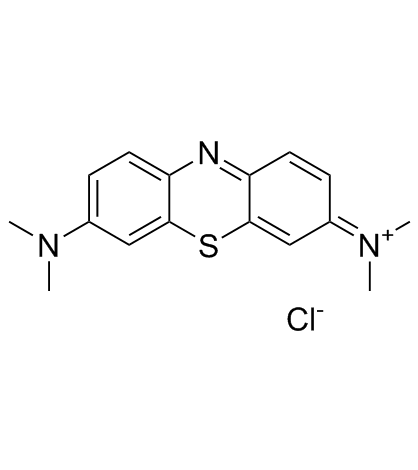
-
GC39603
Methylene blue trihydrate
Methylenblautrihydrat (C.
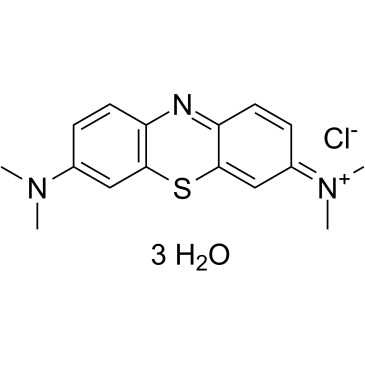
-
GC32194
Metrifonate (Trichlorfon)
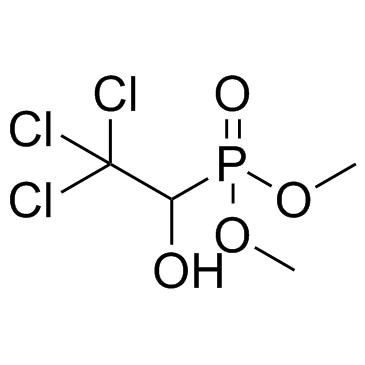
-
GC15775
Metronidazole
Nitroimidazol-Antibiotikum
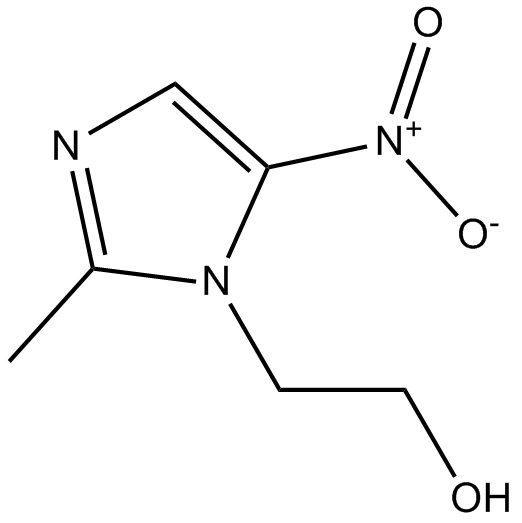
-
GC39660
Metronidazole Benzoate
Metronidazolbenzoat, abgeleitet von einem Metronidazol und einer BenzoesÄure, spielt eine Rolle als antibakterielles, antimikrobielles, antiparasitÄres und antitrichomonales Mittel.
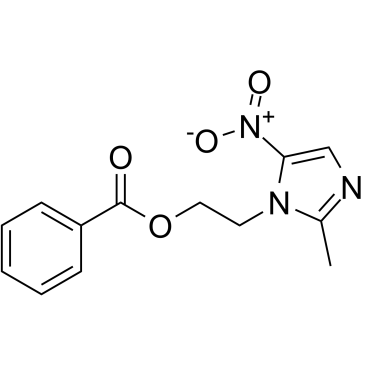
-
GC44192
Micrococcin P1
Micrococcin P1 ist ein makrozyklisches Peptid-Antibiotikum und ein potenter Hepatitis-C-Virus (HCV)-Hemmer mit einem EC50-Bereich von 0,1-0,5 μM.
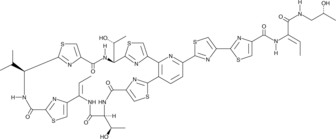
-
GC32173
Milbemycin oxime
Milbemycinoxim ist ein makrozyklisches Lacton und hat ein breites antiparasitÄres Wirkungsspektrum.
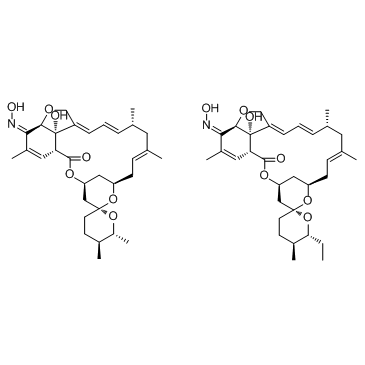
-
GC63076
ML251
ML251, ein potenter nanomolarer T.
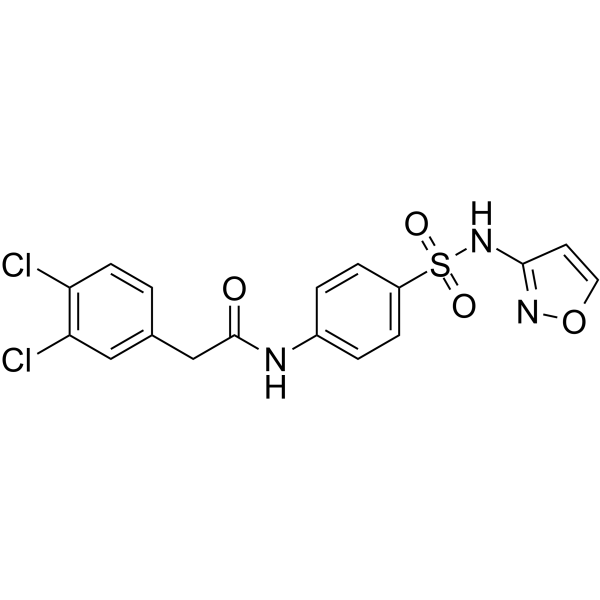
-
GC36637
MMV008138
MMV008138 ist ein speziesselektives IspD (Enzym 2-C-Methyl-d-Erythritol-4-Phosphat-Cytidylyltransferase)-gerichtetes Antimalariamittel mit einem IC50-Wert von 44 nM fÜr PfIspD (P.
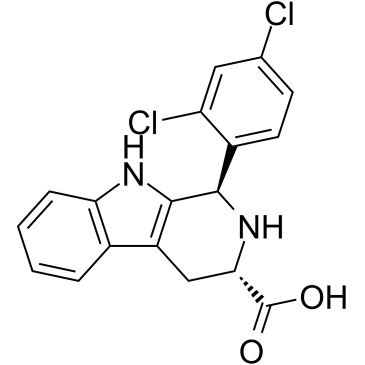
-
GC62109
MMV390048
MMV390048 ist ein Vertreter einer neuen chemischen Klasse von Plasmodium-PI4K-Inhibitoren (Kdapp=0,3 μM).
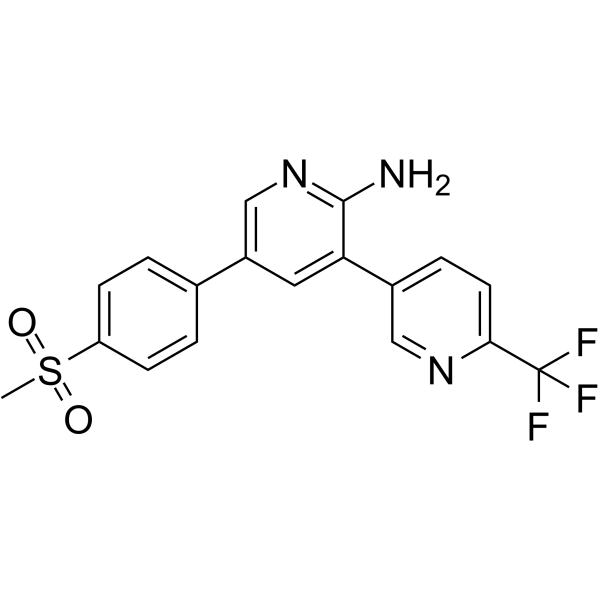
-
GC64671
Modoflaner
Modoflaner ist ein Antiparasitikum (veterinÄrmedizinische Verwendung).
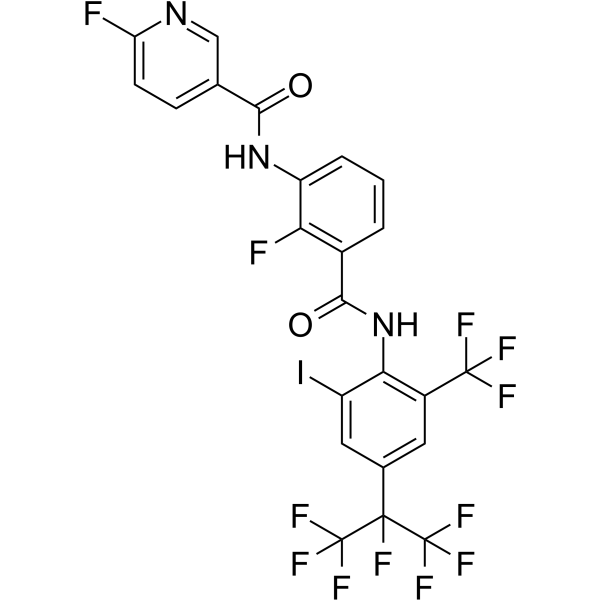
-
GC32285
Morantel tartrate
Morantel Tartrat ist ein Anthelminthikum mit breitem Spektrum, wirksam und von geringer ToxizitÄt.
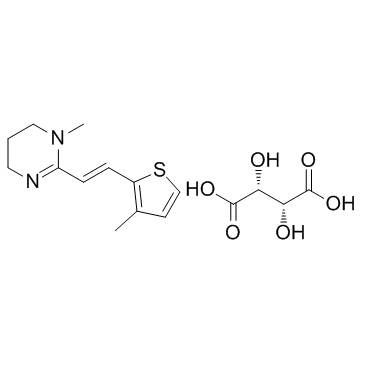
-
GC17083
Moxidectin
Moxidectin (ProHeart 6; CL301423; Cydectin) ist ein Anthelminthikum, das parasitÄre WÜrmer (Helminthen) abtÖtet und zur Vorbeugung und BekÄmpfung von HerzwÜrmern und DarmwÜrmern eingesetzt wird.
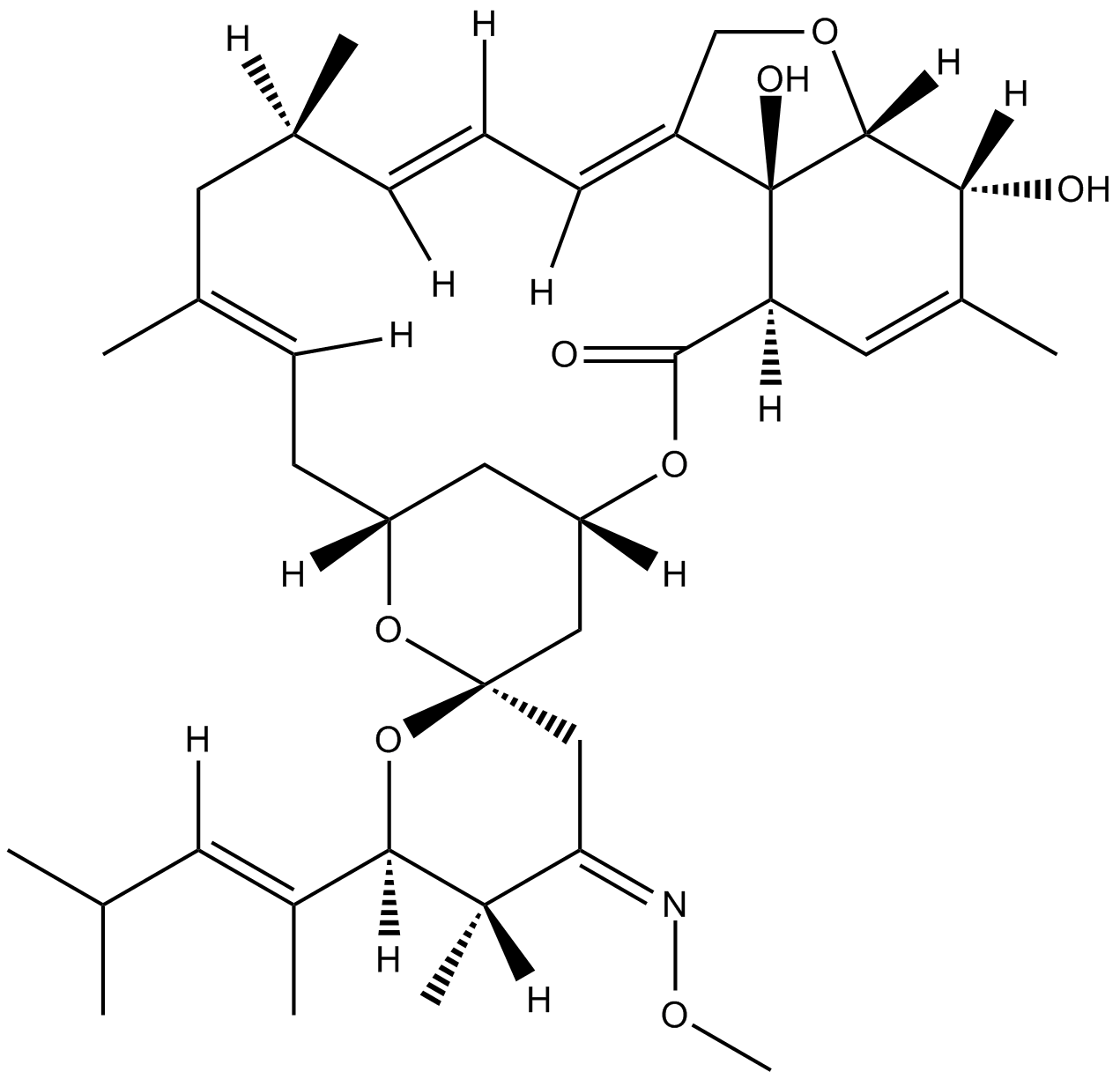
-
GC36709
N-Desethyl amodiaquine
N-Desethylamodiaquin ist das wichtigste biologisch aktive Metabolit von Amodiaquin.
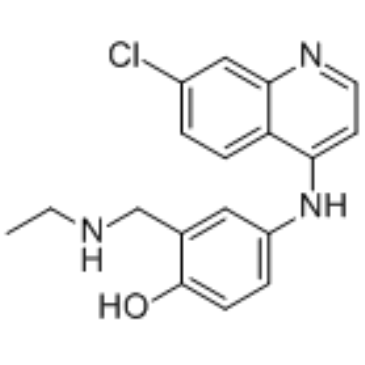
-
GC44344
N-desethyl Amodiaquine (hydrochloride)
N-Desethyl Amodiaquin (Hydrochlorid) ist der wichtigste biologisch aktive Metabolit von Amodiaquin.
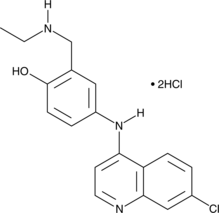
-
GC16090
Naphthoquine phosphate
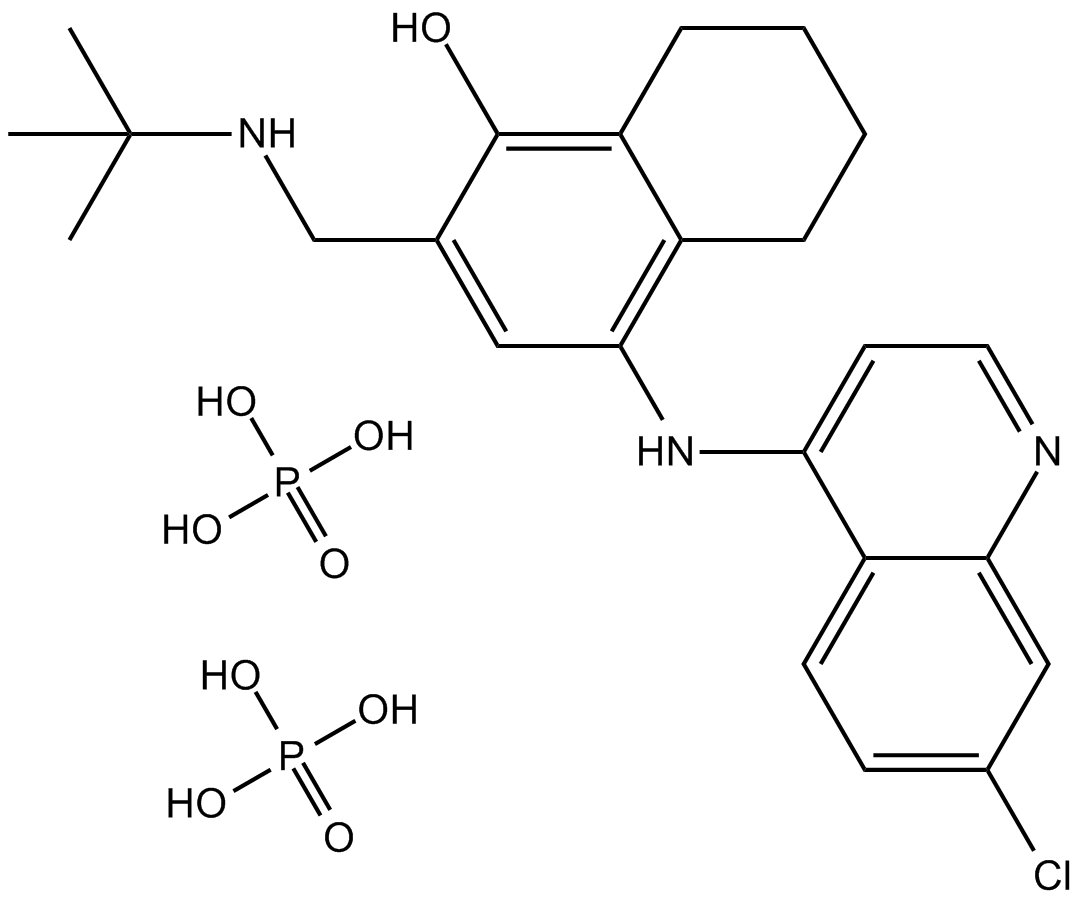
-
GC69550
Neoprocurcumenol
Neoprocurcumenol is a compound that kills larvae and has significant toxic effects on mosquito larvae, with LC50 and LC90 values of 13.69 and 23.92 ppm, respectively.
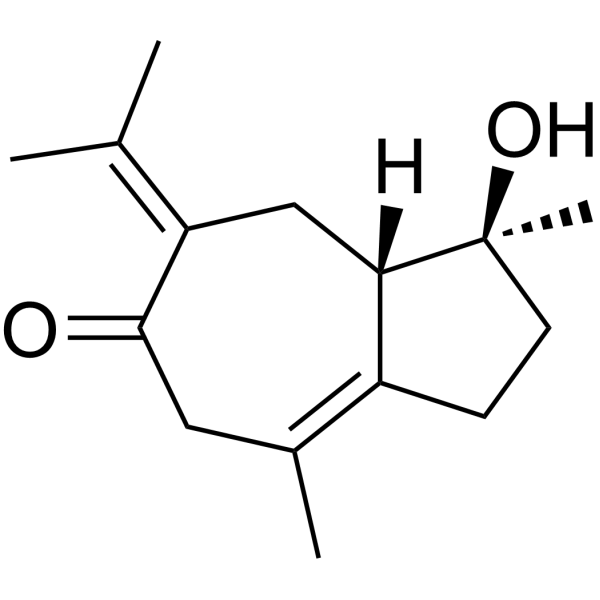
-
GC38567
Nepodin
Nepodin (Musizin) ist ein Inhibitorisolat der Chinonoxidoreduktase (PfNDH2) aus Rumex crispus.
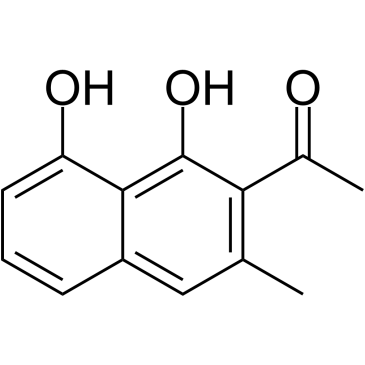
-
GC63103
Nequinate
Nequinat, eine Chinolinverbindung, ist ein Antikokzidiose-Mittel gegen Infektionen mit zÖkaler Kokzidiose (Eimeria tenella).
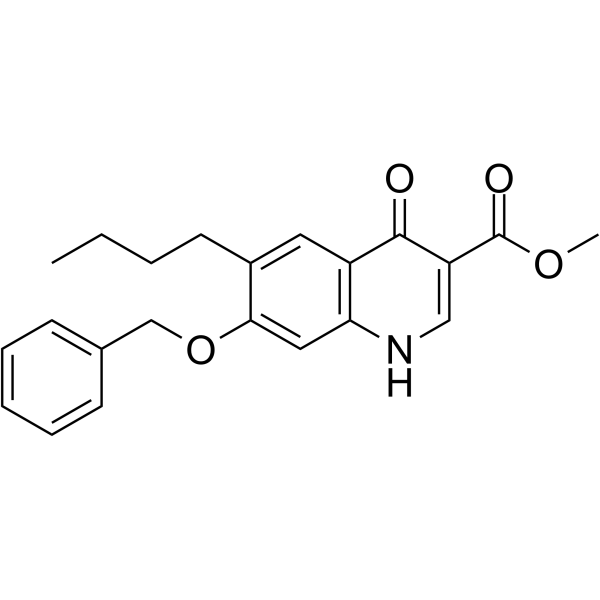
-
GC41343
Nerolidol
Nerolidol ist ein natÜrliches membranaktives Sesquiterpen mit Antitumor-, antibakterieller, antimykotischer und antiparasitÄrer AktivitÄt.

-
GC63109
Niazinin
Niazinin ist ein Thiocarbamat-Glykosid mit antileishmanialer Wirkung und einem IC50-Wert von 5,25 μM.
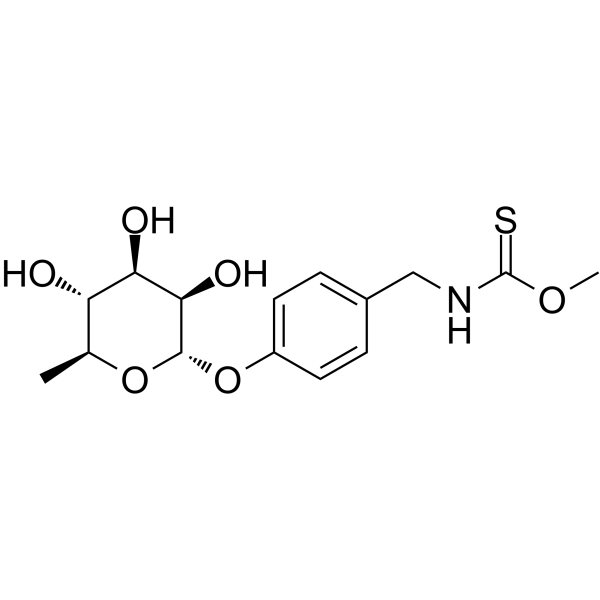
-
GC61421
Nicarbazin
Nicarbazin ist ein wirksames Antikokzidiosemittel fÜr HÜhner.
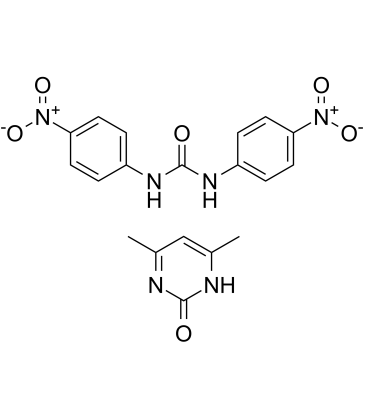
-
GC69558
Niclofolan
Niclofolan (BAY 9015) is a vermifuge with oral activity. Niclofolan can be used for research related to parasitic infections.
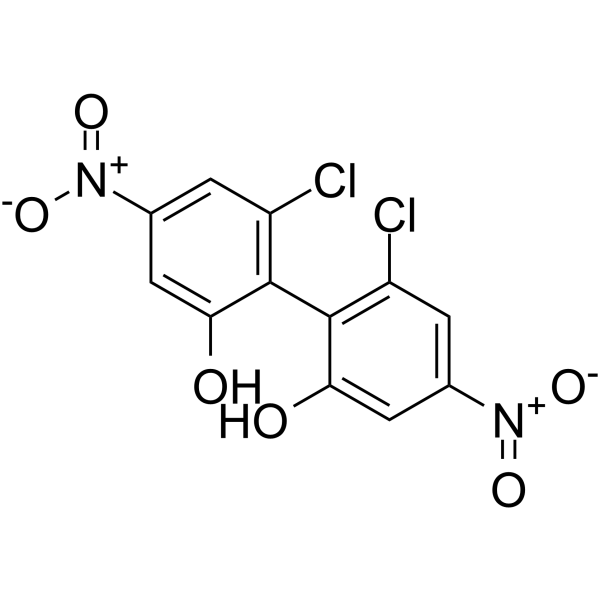
-
GC13586
Niclosamide
Niclosamid (BAY2353) ist ein oral wirksames Antihelminthikum, das in der Erforschung parasitÄrer Infektionen eingesetzt wird.
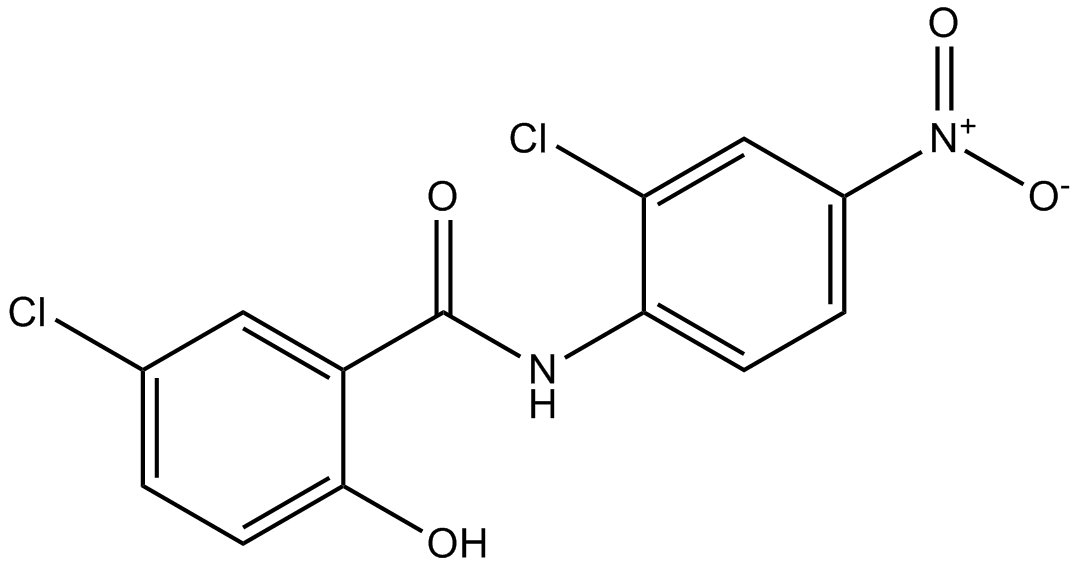
-
GC44400
Niclosamide (ethanolamine salt)
Niclosamid (BAY2353)-Olamin ist ein oral wirksames Antihelminthikum, das in der Erforschung parasitÄrer Infektionen verwendet wird.
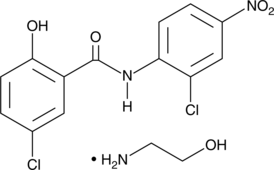
-
GC10276
Nifuratel
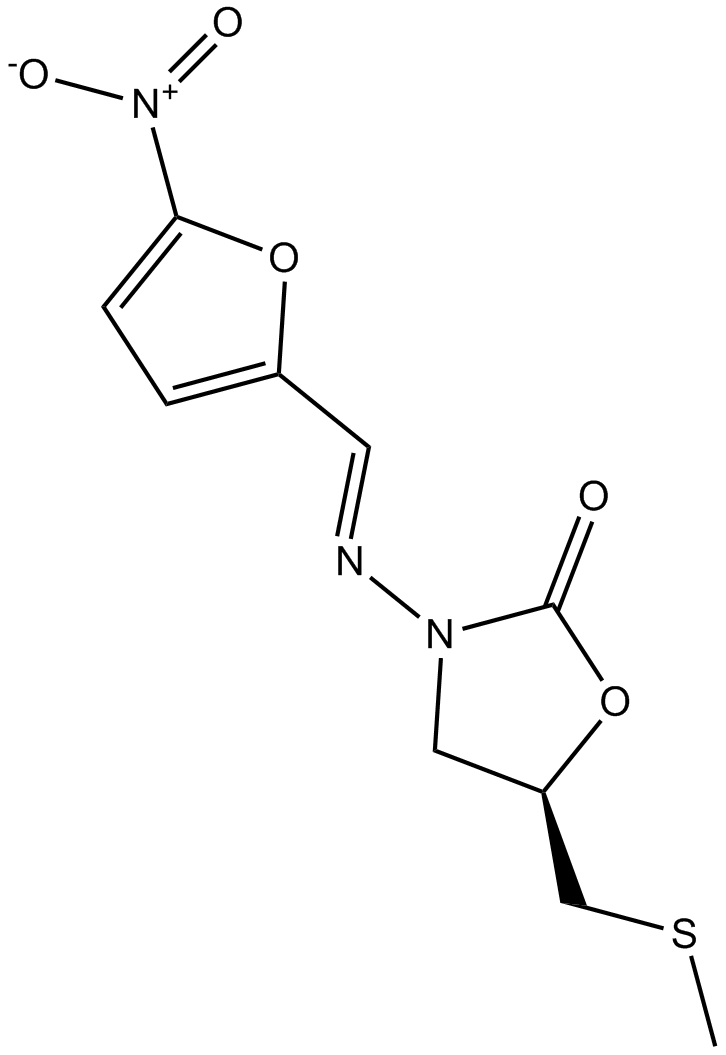
-
GC32266
Nifursemizone (Etafurazone)
Nifursemizon (Etafurazon) ist ein Medikament gegen Protozoen.

-
GC18183
Nifurtimox
Nifurtimox, ein Antiprotozoenmittel, das im Allgemeinen zur Behandlung von Infektionen mit Trypanosoma cruzi verwendet wird, wurde bei der Therapie von Neuroblastomen eingesetzt.
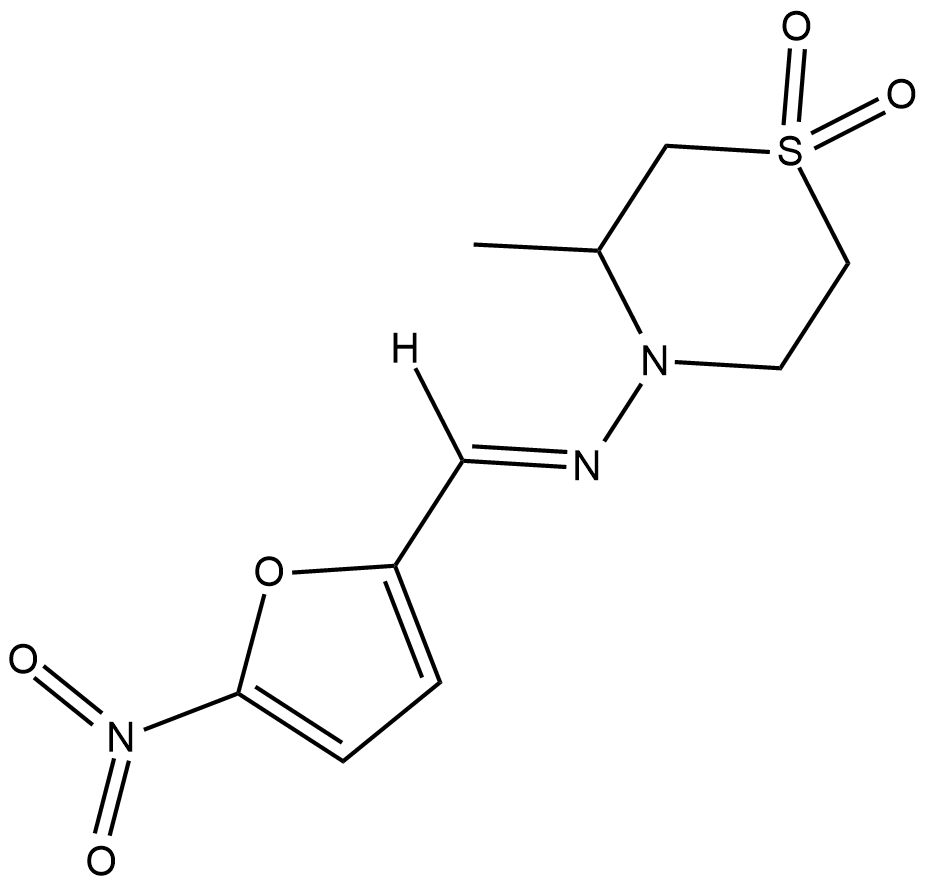
-
GC11113
Nimorazole
Nimorazol (K-1900), ein 2-Nitroimidazol, ist ein hypoxischer Zellstrahlungssensibilisator.
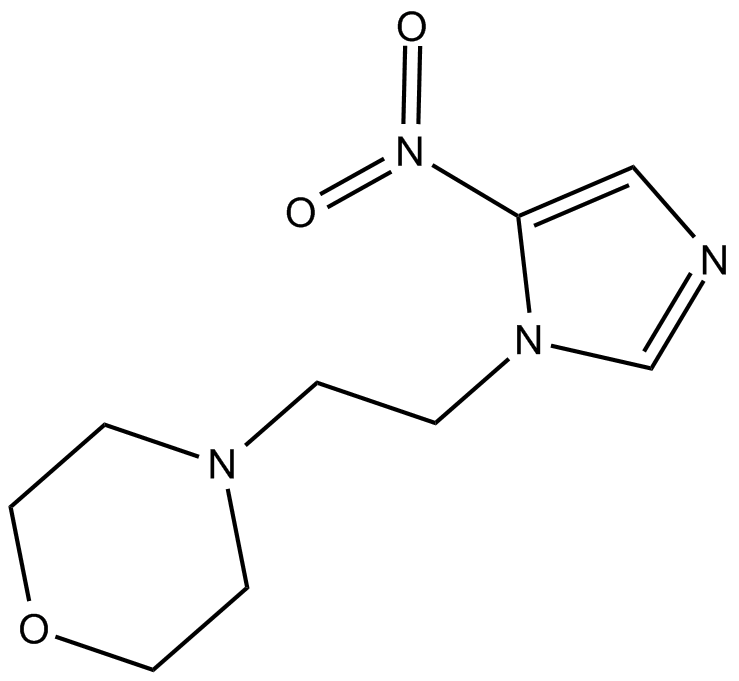
-
GC33953
Nitromide (3,5-Dinitrobenzamide)
Nitromid (3,5-Dinitrobenzamid) ist ein Antiparasitikum.
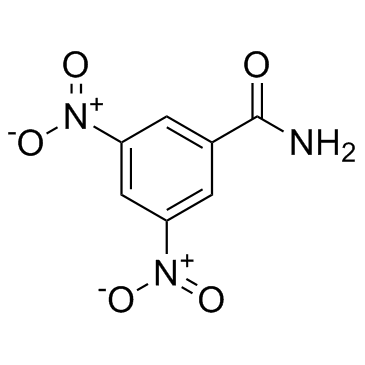
-
GC62369
Nitroxynil
Nitroxynil, ein anthelmintisches Mittel, ist gegen Parasiten sowohl im erwachsenen als auch im unreifen Stadium aktiv.
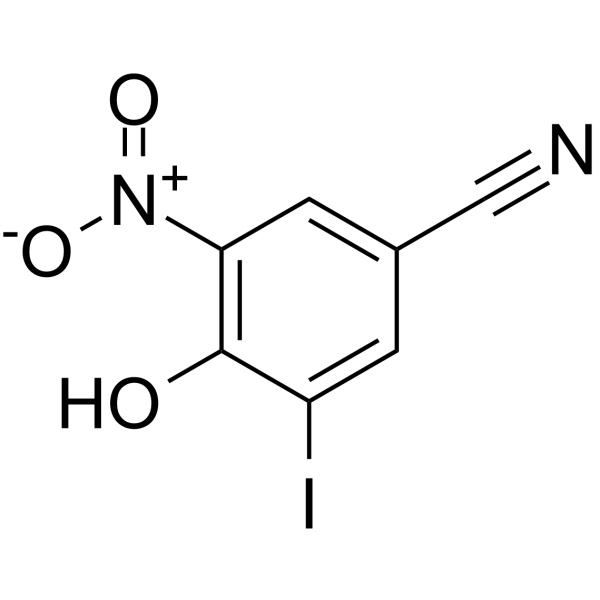
-
GC36769
NPD-1335
NPD1335 ist ein Trypanosoma brucei-Phosphodiesterase B1 (TbrPDEB1)-Inhibitor mit submikromolarer AktivitÄt gegen T.
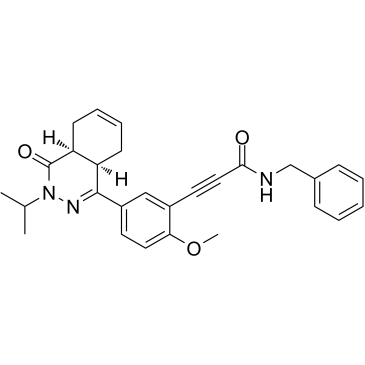
-
GC33969
NSC5844 (RE-640)
NSC5844 (RE-640) (RE-640) ist ein 4-Aminochinolin-Derivat mit Antitumor- und AntimalariaaktivitÄt.
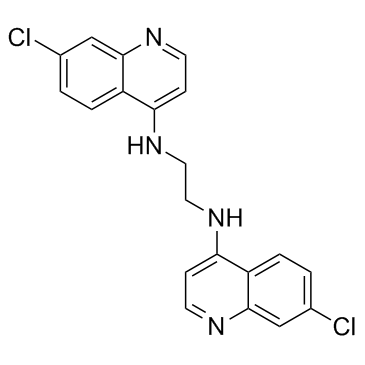
-
GC10025
Ornidazole
Ornidazol (Ro 7-0207) ist ein 5-Nitroimidazol-Derivat mit antiprotozoalen und antibakteriellen Eigenschaften gegen anaerobe Bakterien.
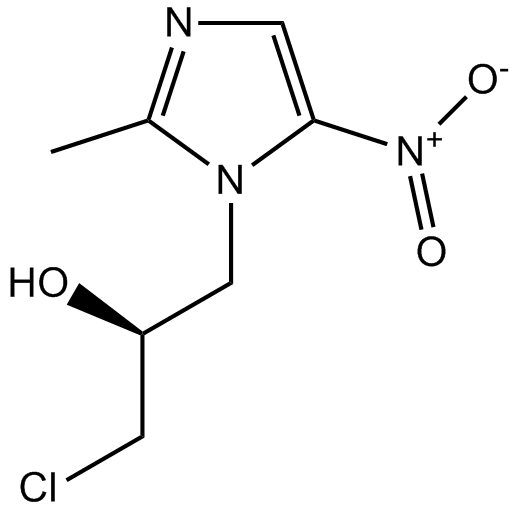
-
GC36816
Ornidazole Levo-
Ornidazol Levo- ist das Levo-Isomer von Ornidazol.
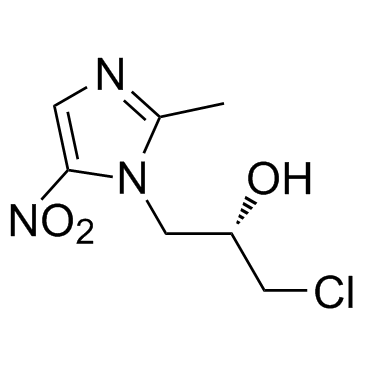
-
GN10333
Osthole
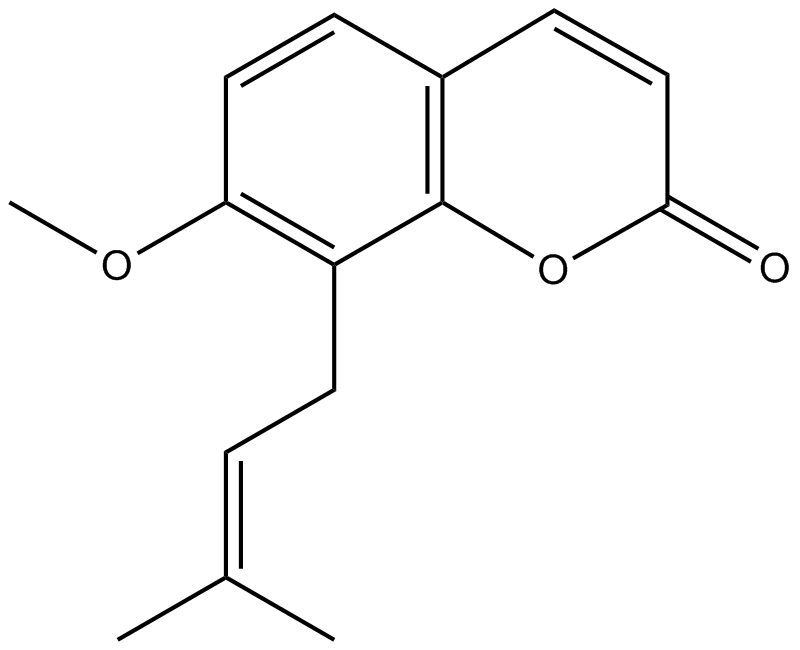
-
GC32176
Oxantel pamoate (Oxantel embonate)
Oxantel-Pamoat (Oxantel-Embonat) ist ein weit verbreitetes Entwurmungsmittel, das stark gegen Trichuris muris und HakenwÜrmer wirkt.
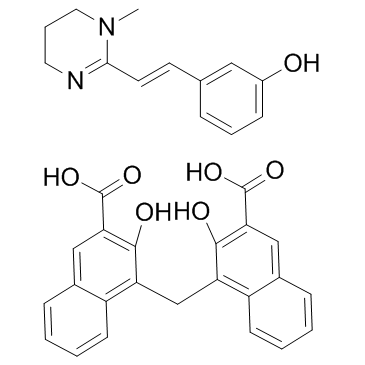
-
GC14611
Oxfendazole
Oxfendazol ist die Sulfoxidform von Fenbendazol, einem Breitband-Benzimidazol-Anthelminthikum.
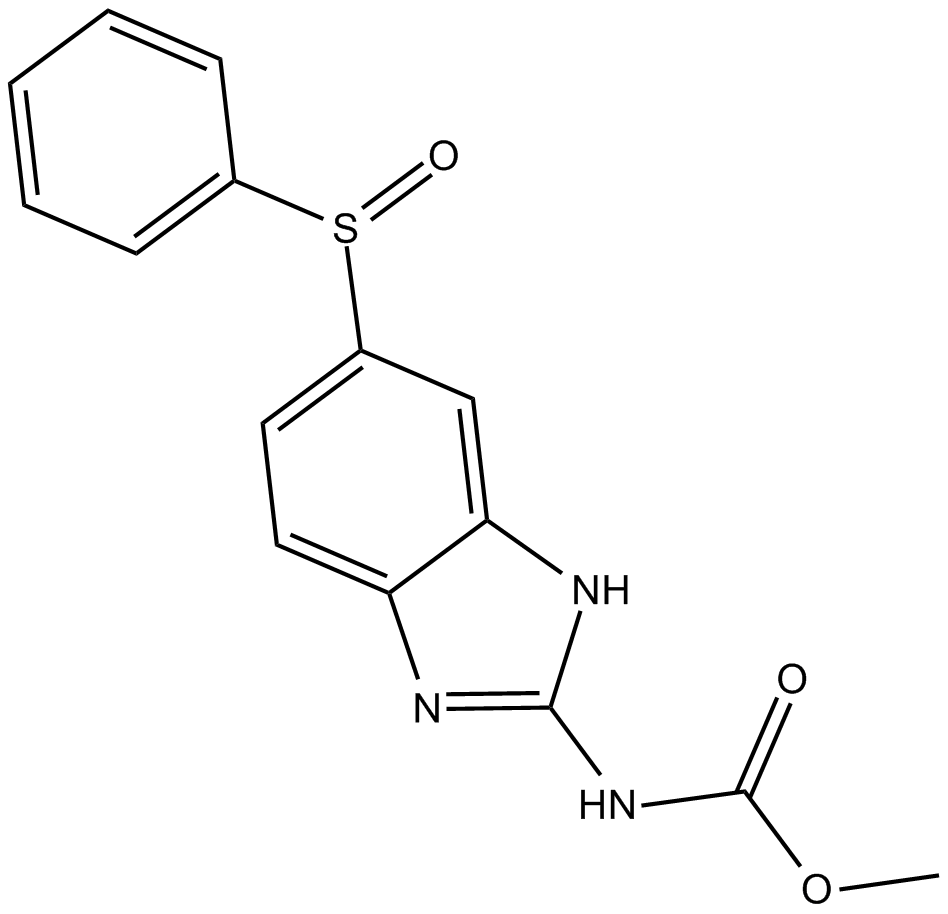
-
GC15228
Oxibendazole
Oxibendazol ist ein wirksames Benzimidazol-Anthelminthikum und wirkt gegen Nema-Tode-Infektionen.
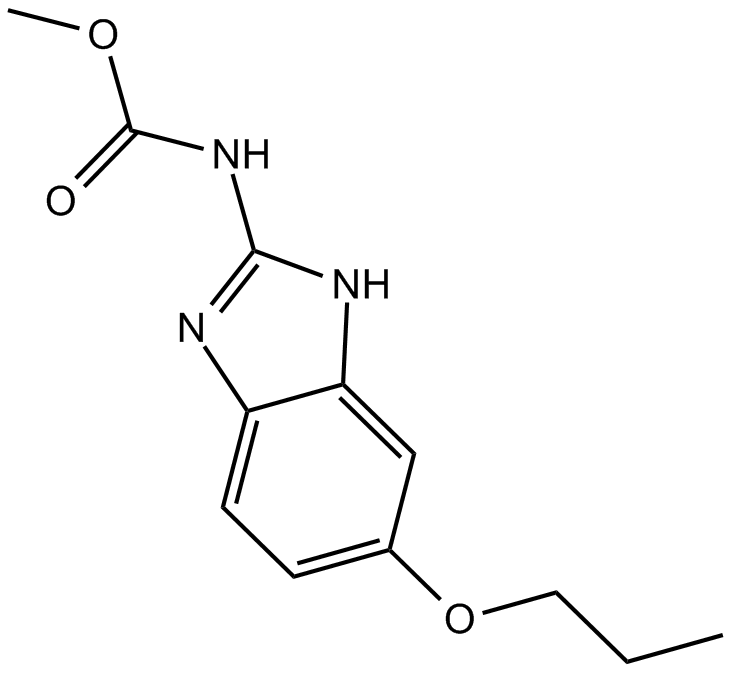
-
GC32198
Oxyclozanide
Oxyclozanid ist ein Salicylanilid-Anthelminthikum, das hauptsÄchlich durch Entkopplung der oxidativen Phosphorylierung in Egeln wirkt.
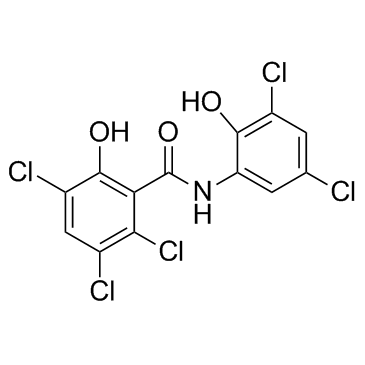
-
GC61163
Oxysanguinarine
Oxysanguinarin (Hydroxysanguinarin; 8-Oxosanguinarin) ist ein Protoberberin-Alkaloid aus Meconopsis simplicifolia mit Antimalaria-AktivitÄt.
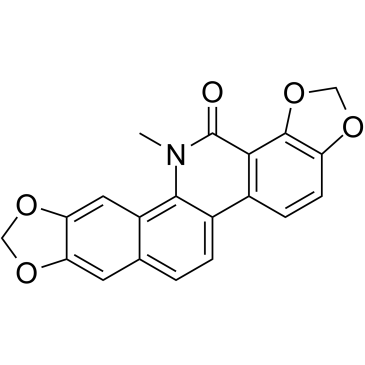
-
GC15249
Pafuramidine

-
GC32233
Panidazole
Panidazol ist ein AmÖbizid.
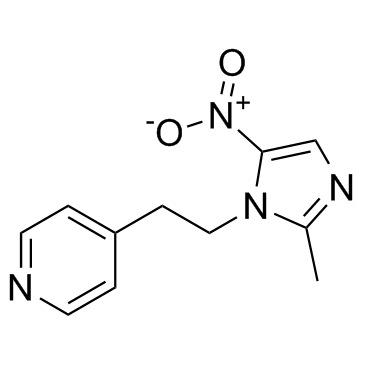
-
GC32134
Parbendazole (SKF 29044)
Parbendazol (SKF 29044) ist ein starker Inhibitor der Mikrotubuli-Montage, destabilisiert Tubulin mit einem EC50-Wert von 530 nM und weist ein breites anthelmintisches Wirkungsspektrum auf.
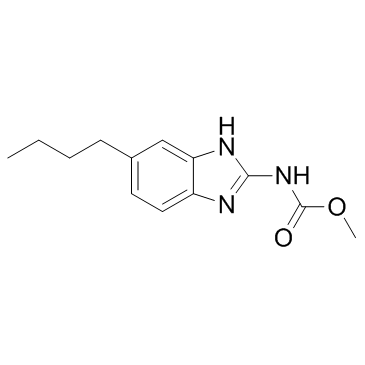
-
GC13692
Paromomycin Sulfate
Paromomycin (Aminosidin)-Sulfat, ein Neomycin-Derivat, ist ein Breitband-Aminoglykosid-Antibiotikum mit amÖbizider und bakterizider Wirkung.
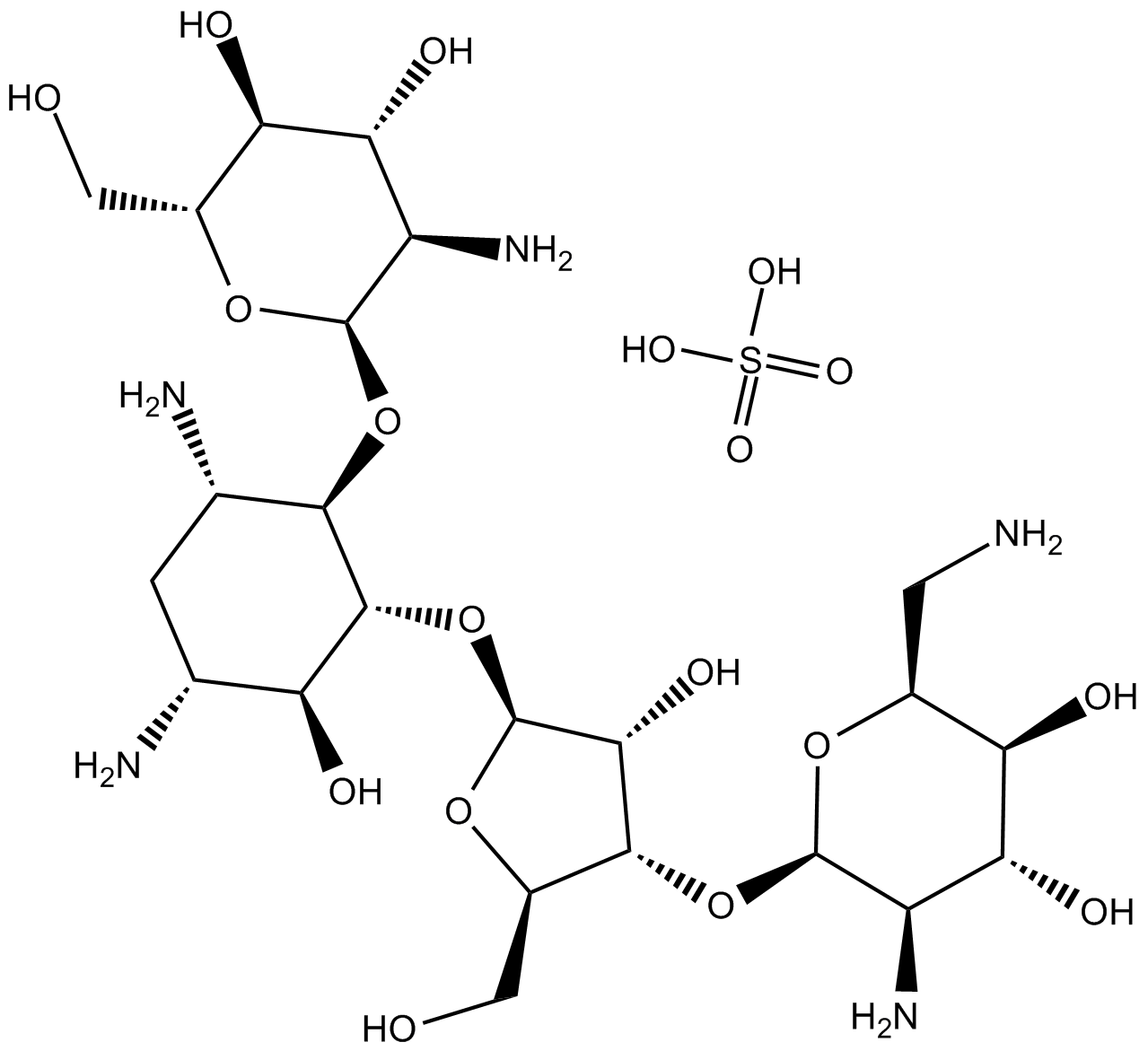
-
GC11468
Pentamidine
Pentamidin (MP-601205) ist ein antimikrobielles Mittel und stÖrt die DNA-Biosynthese.
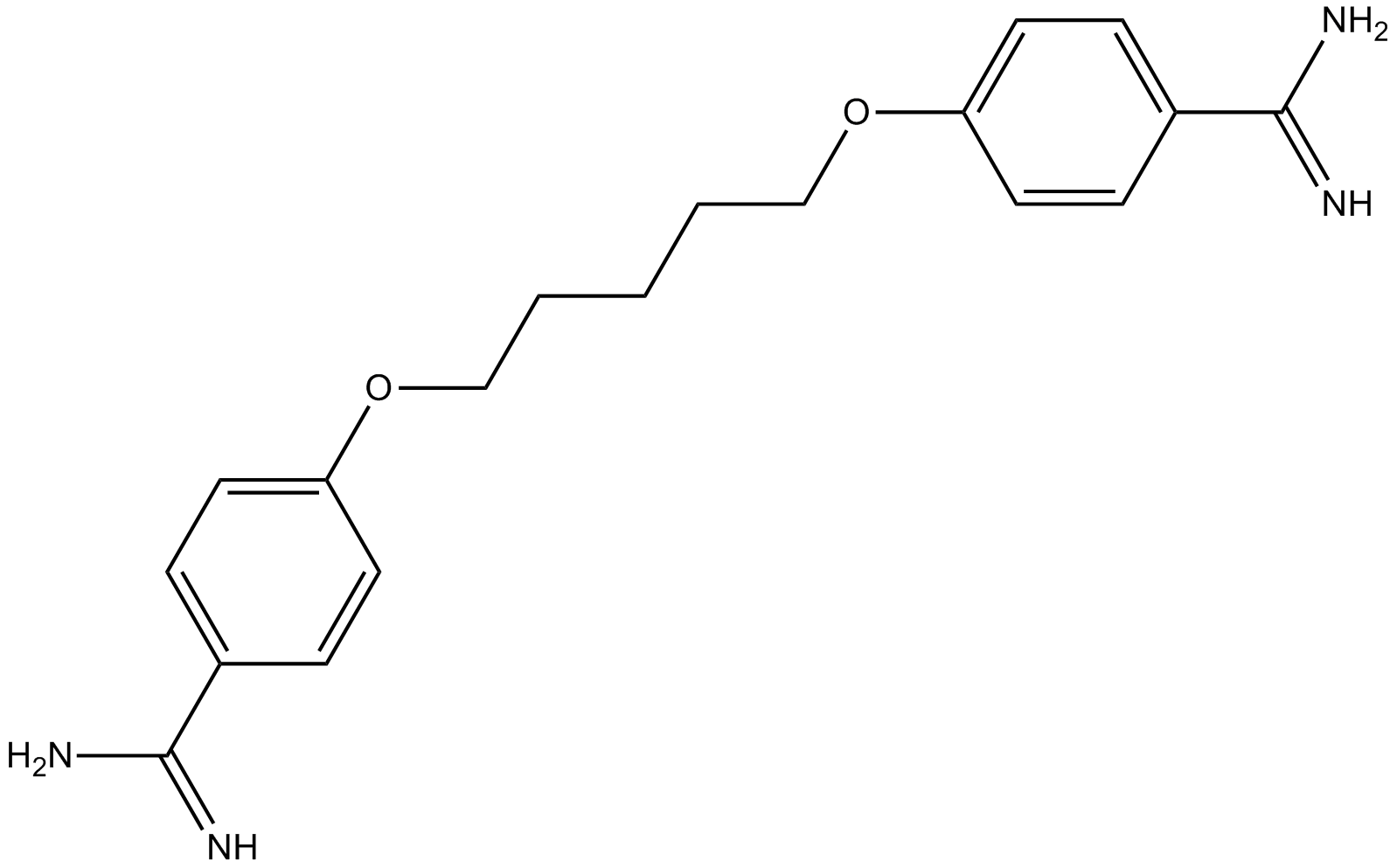
-
GC14941
Pentamidine dihydrochloride
Pentamidindihydrochlorid (MP-601205-Dihydrochlorid) ist ein antimikrobielles Mittel und stÖrt die DNA-Biosynthese.
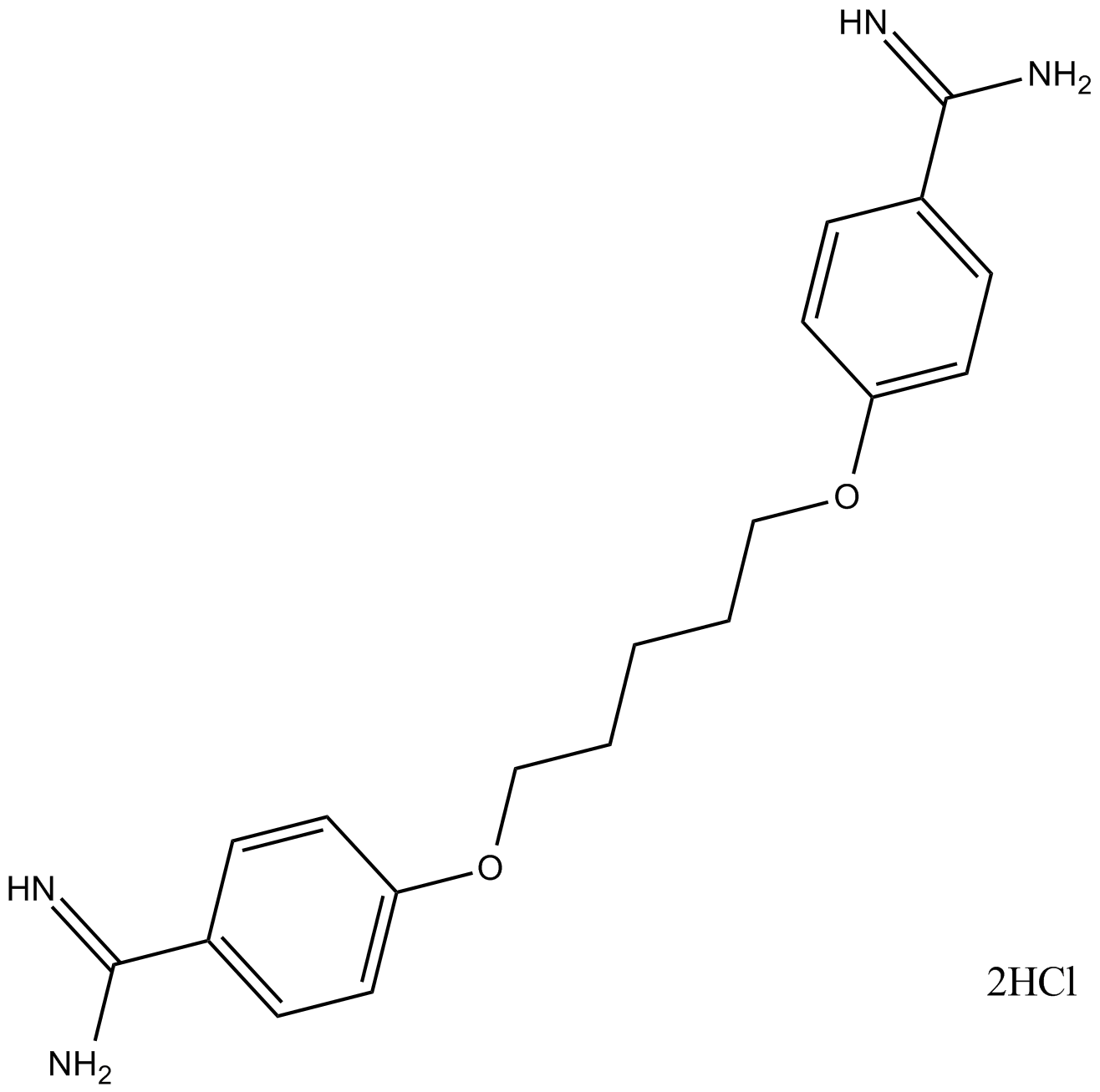
-
GC33928
Permethrin (NRDC-143)
Permethrin (NRDC-143) (NRDC-143) ist ein Insektizid, Akarizid und Insektenschutzmittel; fungiert als Neurotoxin, das die Neuronenmembranen beeinflusst, indem es die Natriumkanalaktivierung verlÄngert.
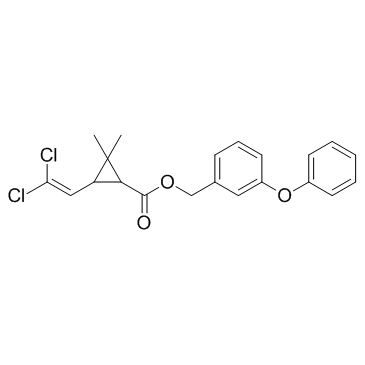
-
GC63142
Permethrin-d5
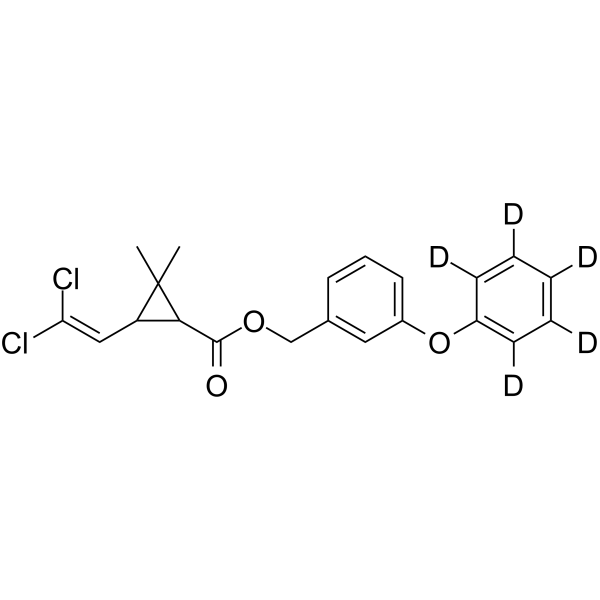
-
GC14630
PF 1022A
PF 1022A ist ein Cyclooctadepsipeptid mit anthelmintischen Breitbandeigenschaften, das durch Fermentation des Pilzes Mycelia sterilia hergestellt wird.
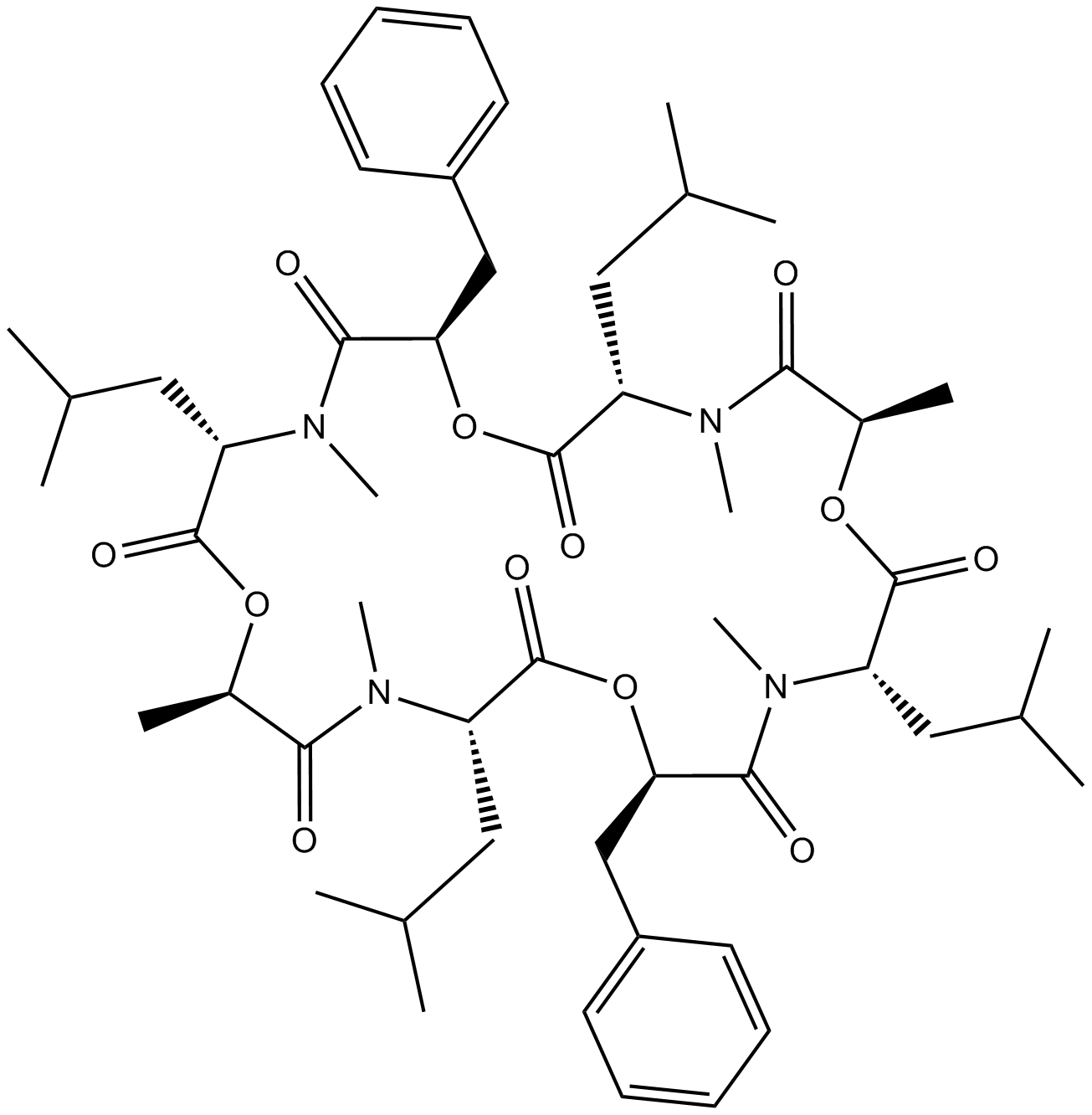
-
GC64567
PfDHODH-IN-1
PfDHODH-IN-1 ist ein Analogon des aktiven Metaboliten von Leflunomid.
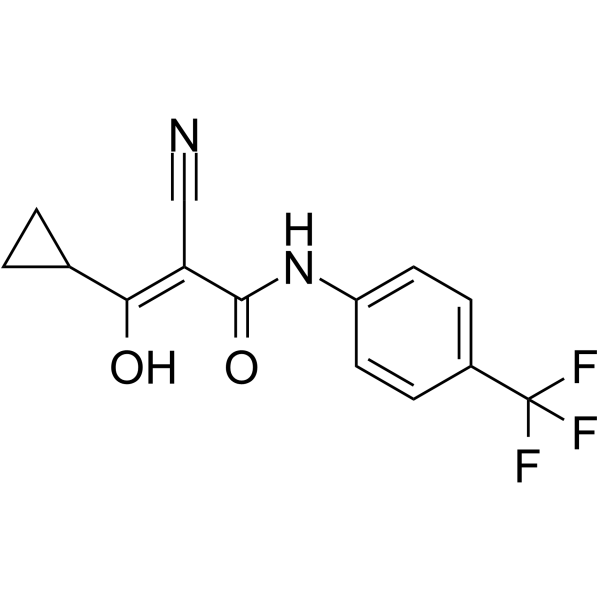
-
GC32253
Phenothrin (Sumithrin)
Phenothrin (Sumithrin) ist ein synthetisches Pyrethroid, das erwachsene FlÖhe und Zecken tÖtet.
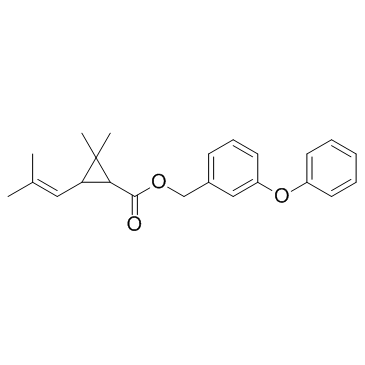
-
GC32226
Phosalone
Phosalone ist ein Mitglied der Organophosphat-Familie von Insektiziden.
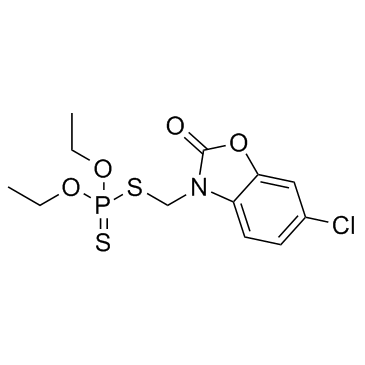
-
GC63299
PI-55
PI-55 ist ein spezifischer Cytokinin-Rezeptor-Inhibitor.
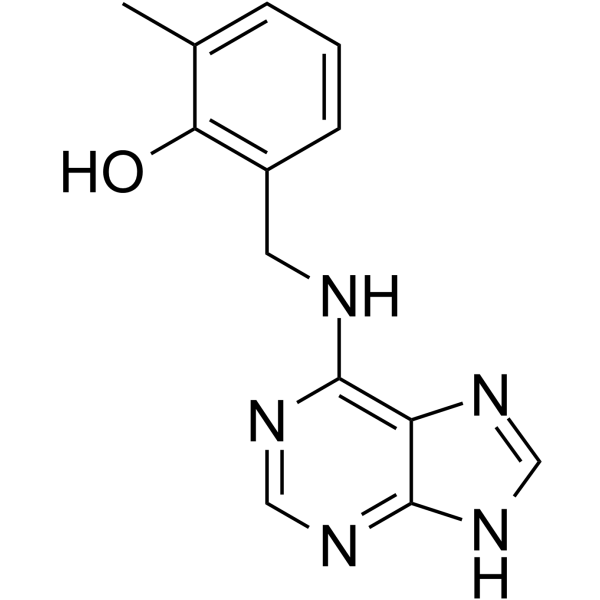
-
GC36913
Picaridin
Picaridin (Lcaridin) ist ein Breitband-Arthropoden-Repellent.
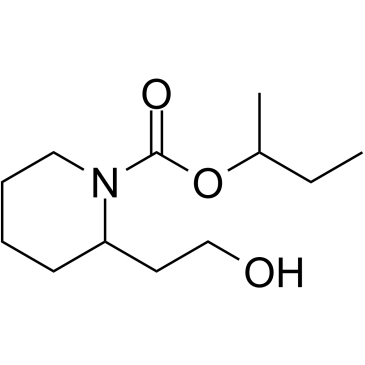
-
GC36925
Piperaquine tetraphosphate tetrahydrate
Piperaquintetraphosphat-Tetrahydrat ist ein Bischinolin-Antimalariamittel.
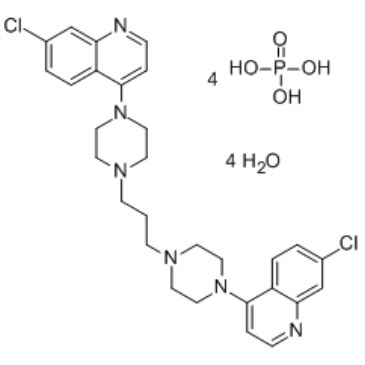
-
GC30962
Piperazine adipate
Piperazinadipat ist ein wirksames Breitspektrum-Anthelminthikum gegen viele hÄufige Wurminfektionen bei SÄugetieren.
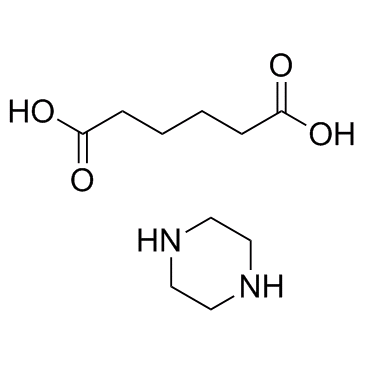
-
GC30497
Piperazine citrate
Piperazin (1,4-Diazacyclohexane) Citrat ist ein Gamma-AminobuttersÄure (GABA)-Agonist.
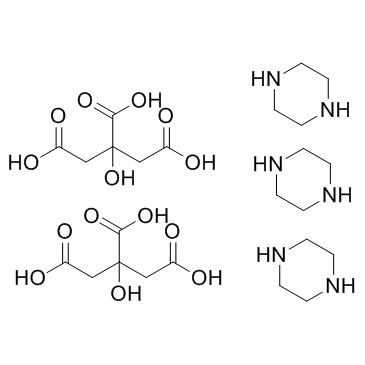
-
GC69712
Pipercide
Pipercide is a type of amide found in the fruit of the pepper plant. It has activity against mosquito larvae. Pipercide acts on the nervous system, causing repetitive firing of central nerve fibers. Pipercide can be used as an insecticide.
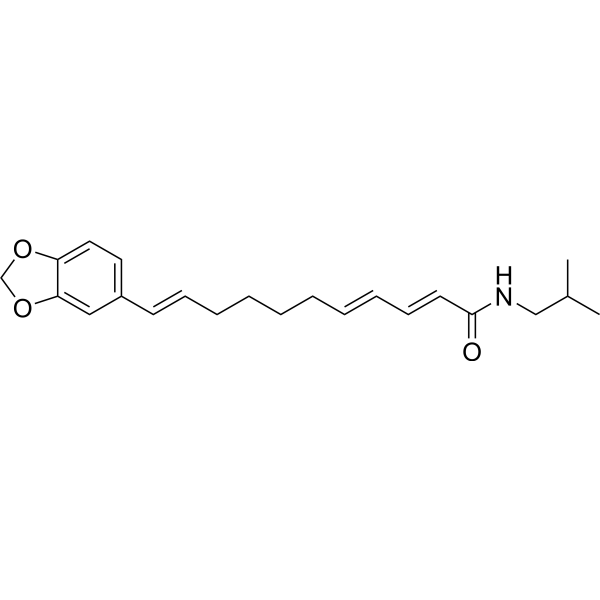
-
GC61190
Piperonyl butoxide
Piperonylbutoxid ist ein halbsynthetisches Derivat von Safrol, das als Bestandteil von Pestizidformulierungen verwendet wird. Es ist ein Synergist, obwohl es keine eigene pestizide Wirkung hat, es verstÄrkt die Wirksamkeit bestimmter Pestizide wie Carbamate, Pyrethrine, Pyrethroide und Rotenon.
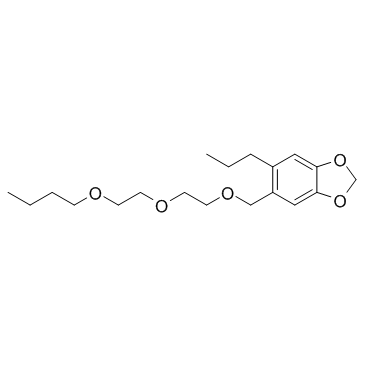
-
GC32136
Piperonyl butoxide (ENT-14250)
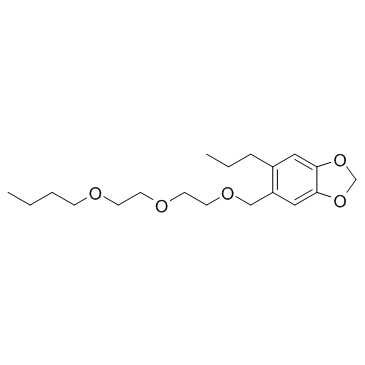
-
GC60291
Pirimiphos-methyl
Pirimiphos-methyl ist ein schnell wirkendes Organophosphor-Insektizid und Akarizid, das eine Hemmung von AChE in Zielorganismen bewirkt.
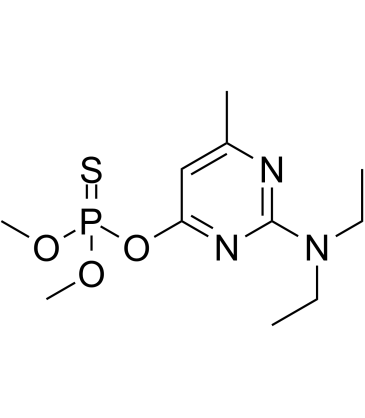
-
GC66376
Pirimiphos-methyl-d6
Pirimiphos-methyl-d6 ist das mit Pirimiphos-methyl bezeichnete Deuterium. Pirimiphos-methyl ist ein schnell wirkendes Organophosphor-Insektizid und Akarizid, das eine Hemmung von AChE in Zielorganismen bewirkt. Pirimiphos-methyl wird hÄufig zur Vorbeugung und BekÄmpfung von KÄfern, SchnauzenkÄfern, Motten und Ephestia cautella wÄhrend der Lagerung von landwirtschaftlichem Getreide verwendet.
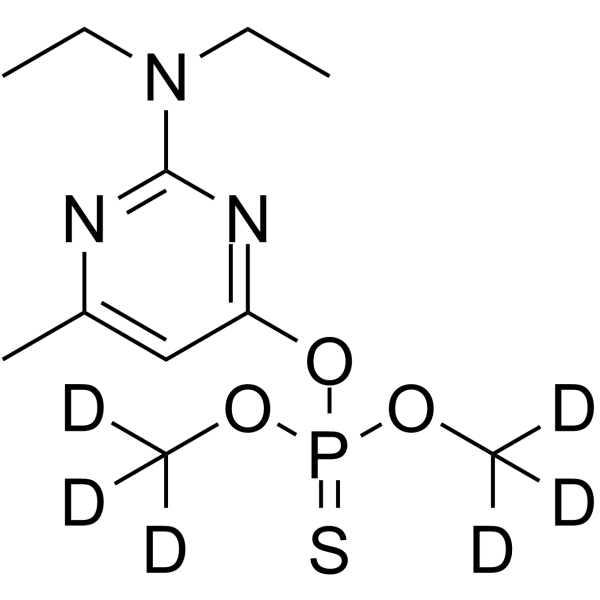
-
GC16569
PK 11195
PK 11195 (RP 52028) ist ein Ligand des Translokatorproteins (TSPO), das auf die Leishmania-Chemotherapie abzielt, mit IC50-Werten von 14,2 μM, 8,2 μM, 3,5 μM fÜr L.
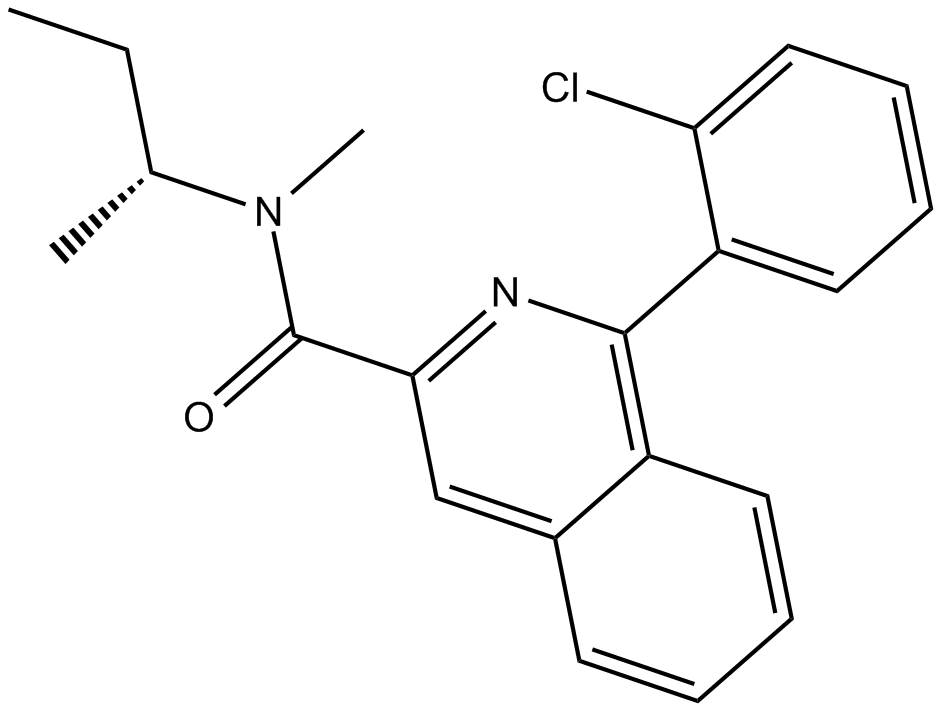
-
GC32027
PPA-904
PPA-904 ist ein spezifischer Phenothiazin-Photosensibilisator in der Forschung zur photodynamischen Therapie (PDT), insbesondere bei der topischen Anwendung bei kutaner Leishmaniose in vivo.
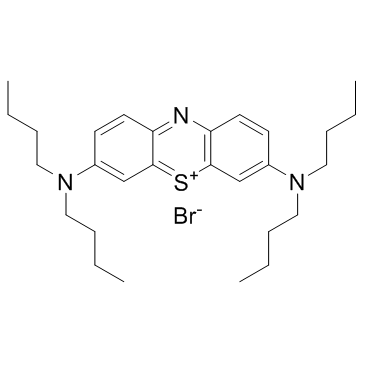
-
GC13197
Praziquantel
Praziquantel ist ein racemisches Gemisch, das aus (R)-Praziquantel und (S)-Praziquantel besteht.
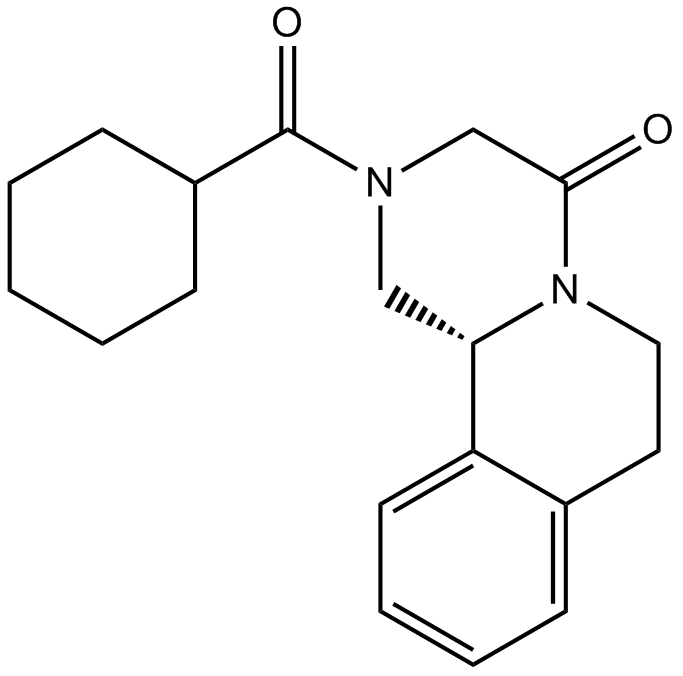
-
GC36958
Praziquantel D11
Praziquantel D11 ist das mit Deuterium bezeichnete Praziquantel, das ein Anthelminthikum ist.
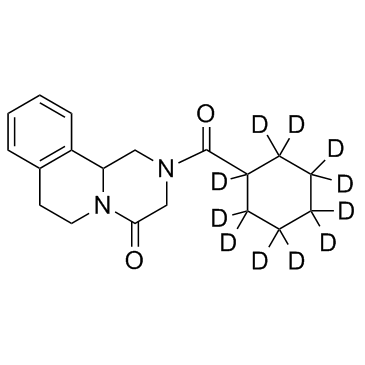
-
GC17770
Primaquine Diphosphate
Primaquine Diphosphate (Primaquine Phosphate), ein 8-Aminochinolin, Übt ein breites Wirkungsspektrum gegen verschiedene Stadien der parasitÄren Malaria aus.
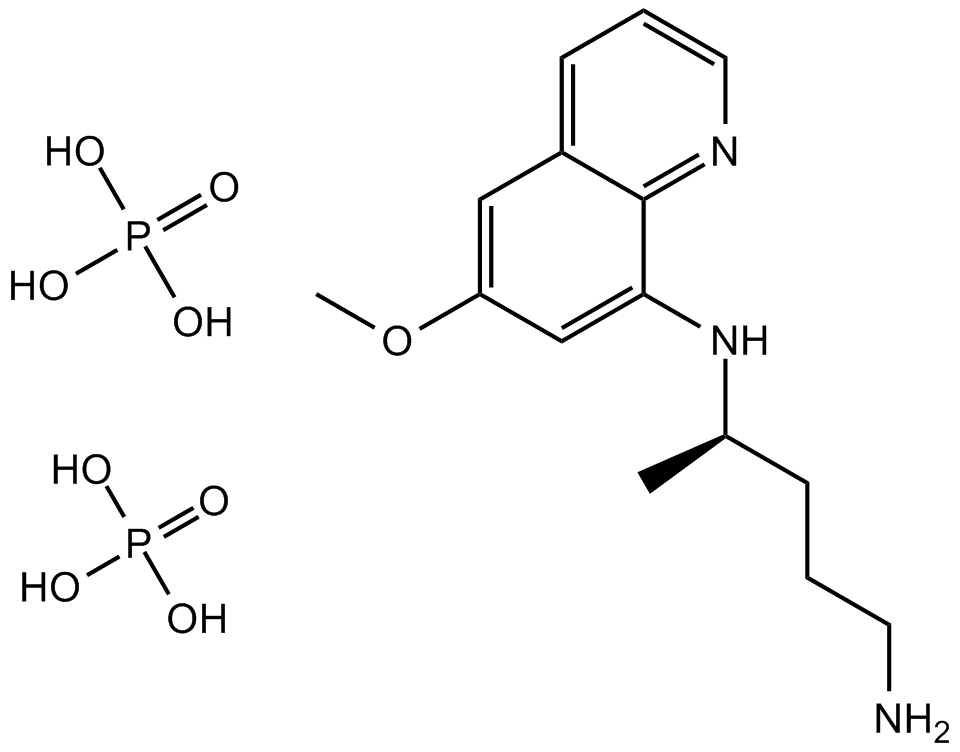
-
GC65066
Prodigiosin hydrochloride
Prodigiosin (Prodigiosin) Hydrochlorid ist ein roter Farbstoff, der von Bakterien als bioaktiver SekundÄrmetabolit produziert wird.
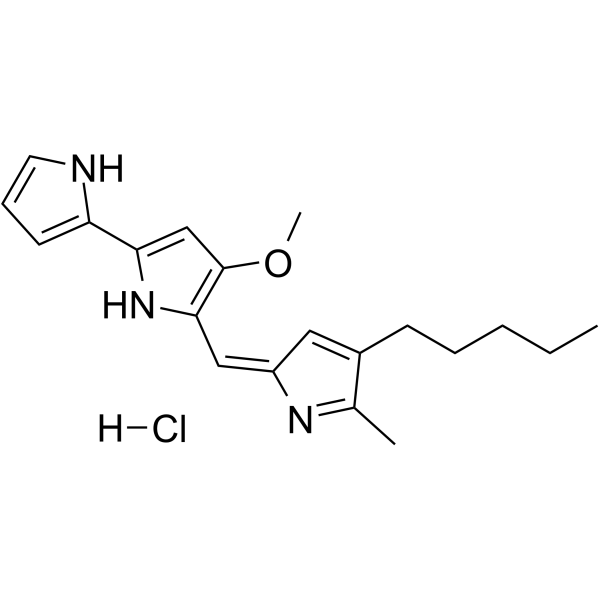
-
GC32085
Proguanil
Proguanil, ein Antimalaria-Prodrug, wird zum aktiven Metaboliten Cycloguanil metabolisiert.
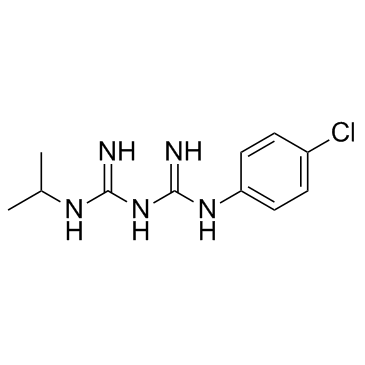
-
GC34286
Proguanil D6
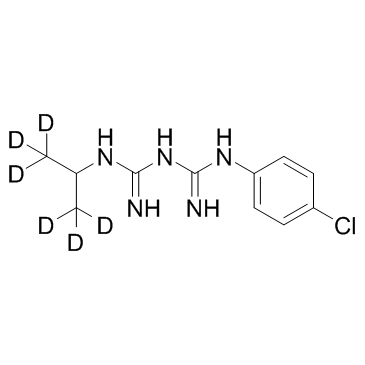
-
GC12081
Psicofuranine
Psicofuramin ist ein Nukleosid-Antibiotikum und hat die Hemmung der Xanthosin-5'-Phosphat-Aminase.
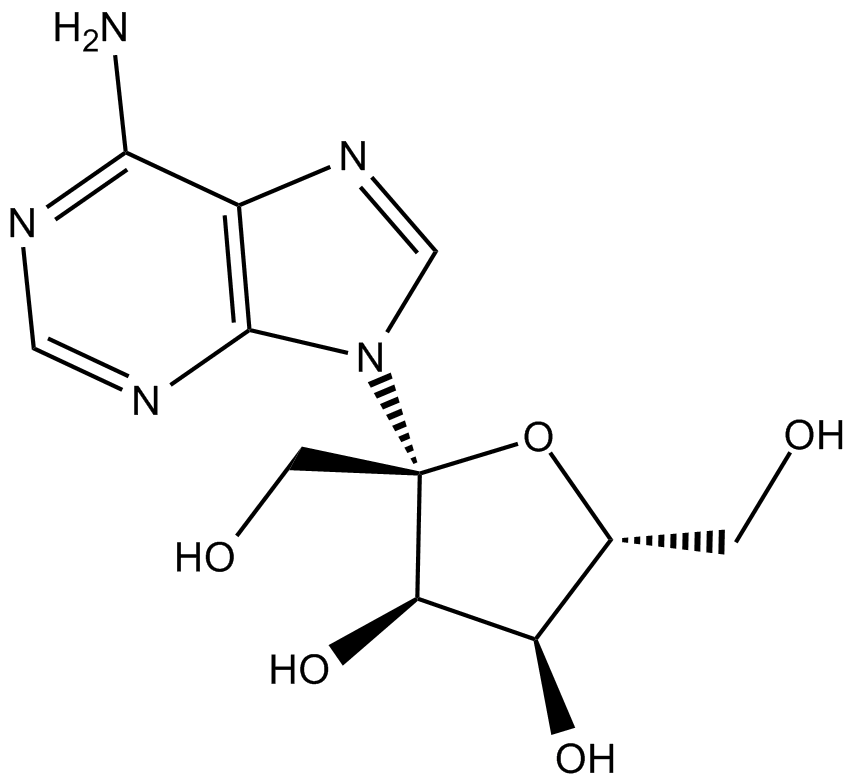
-
GC61222
Purfalcamine
Purfalcamin ist ein oral aktiver, selektiver Plasmodium falciparum Calcium-abhÄngiger Proteinkinase 1 (PfCDPK1)-Inhibitor mit einem IC50 von 17 nM und einem EC50 von 230 nM.
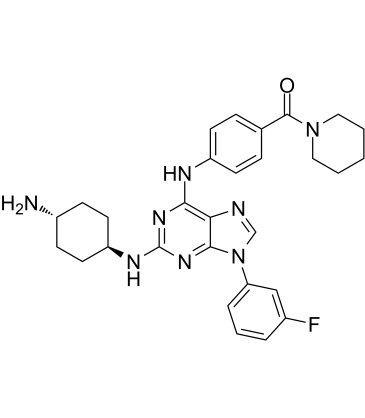
-
GC10208
Pyrantel Pamoate
Pyrantelpamoat (Pyrantelembonat) ist ein oral wirksames Anthelminthikum und ein Agonist des nikotinergen Acetylcholinrezeptors (nAChR).
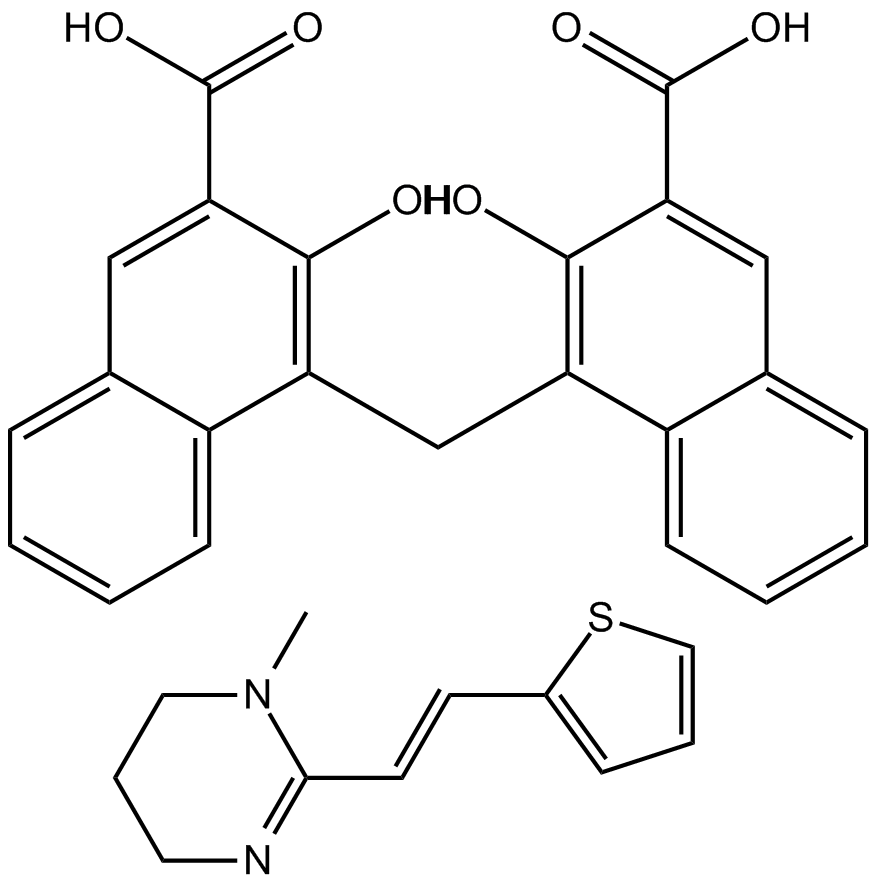
-
GC32156
Pyrantel tartrate
Pyranteltartrat ist ein oral wirksames Anthelminthikum und ein Agonist des nikotinergen Acetylcholinrezeptors (nAChR).
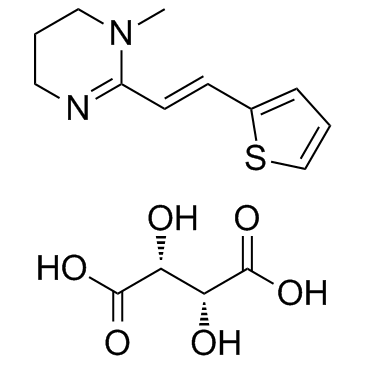
-
GC48015
Pyridaben
Pyridaben ist ein METI-Akarizid, das den mitochondrialen Elektronentransport am Komplex I (METI; Ki = 0,36 nmol/mg Protein in den Mitochondrien des Rattenhirns) hemmt.
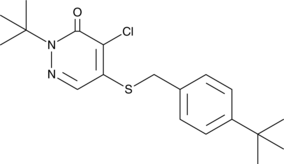
-
GC17867
Pyrimethamine
A dihydrofolate reductase inhibitor
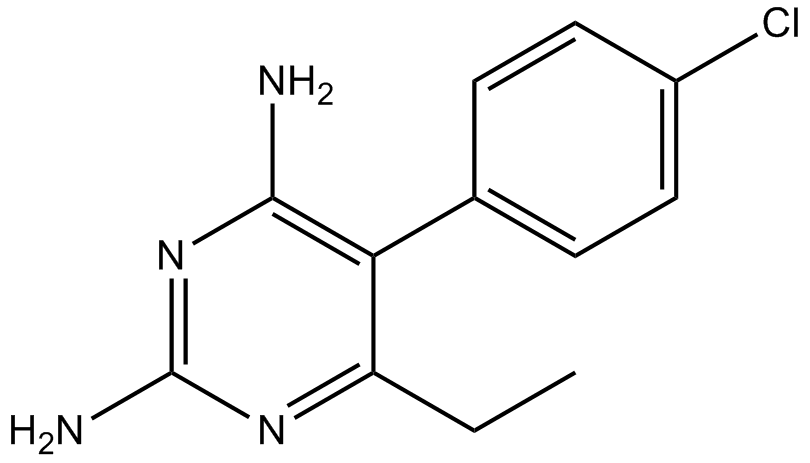
-
GC32232
Pyriproxyfen (S-31183)
Pyriproxyfen (S-31183) ist ein Juvenilhormon-Analogon, das verhindert, dass sich Larven zum Erwachsenenalter entwickeln und sie somit unfÄhig machen, sich fortzupflanzen.
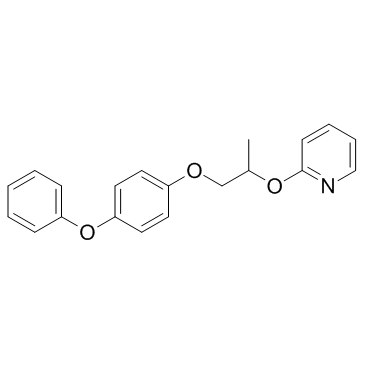
-
GC17403
Pyronaridine Tetraphosphate
An antimalarial agent
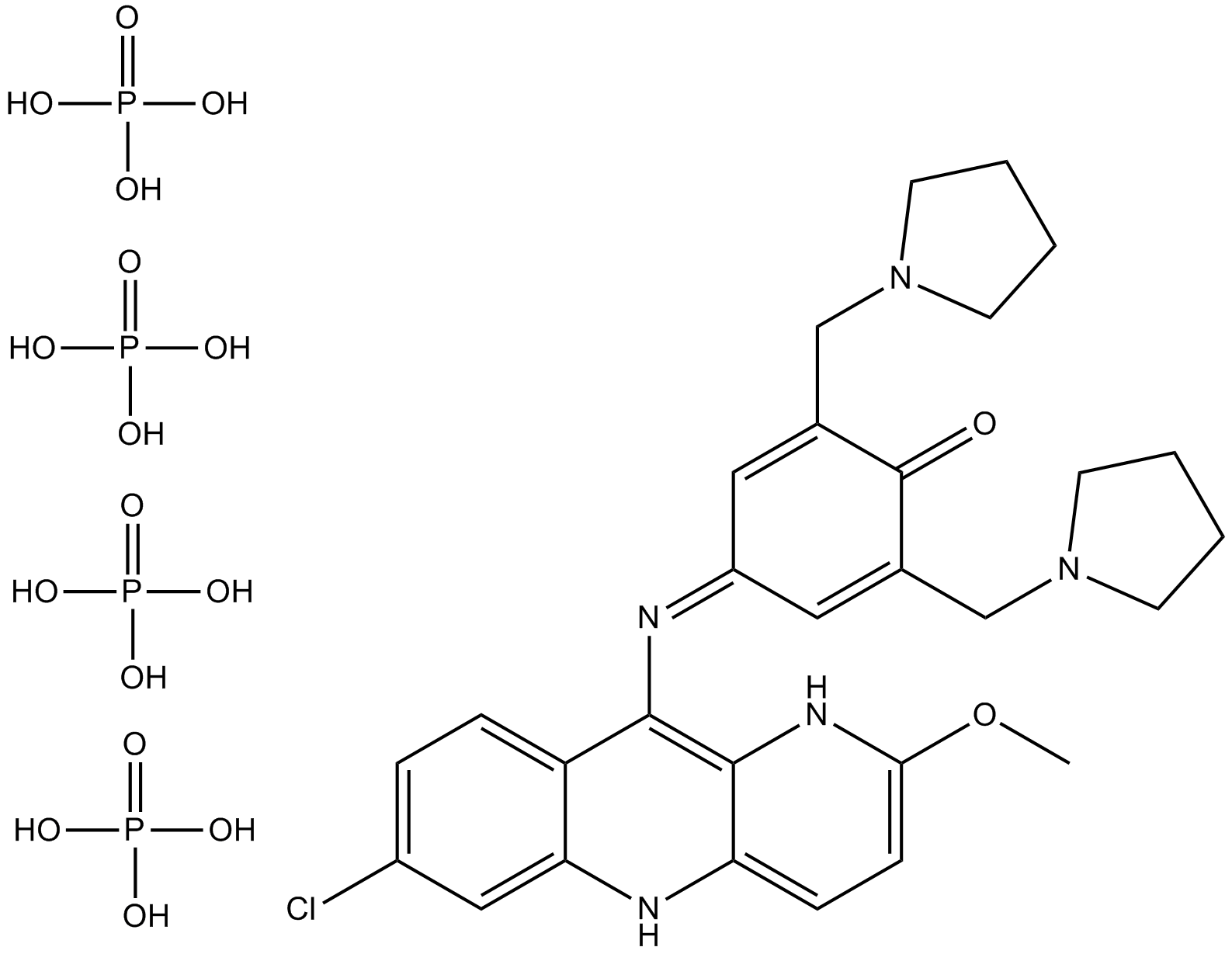
-
GC61229
Quinacrine dihydrochloride
Chinacrin (Mepacrine) Dihydrochlorid ist ein oral bioverfÜgbares Antimalariamittel, das sowohl in vitro als auch in vivo eine Antikrebswirkung besitzt.
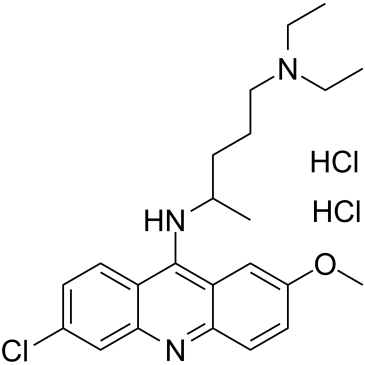
-
GC14264
Quinidine
Chinidin ist ein Antiarrhythmikum.
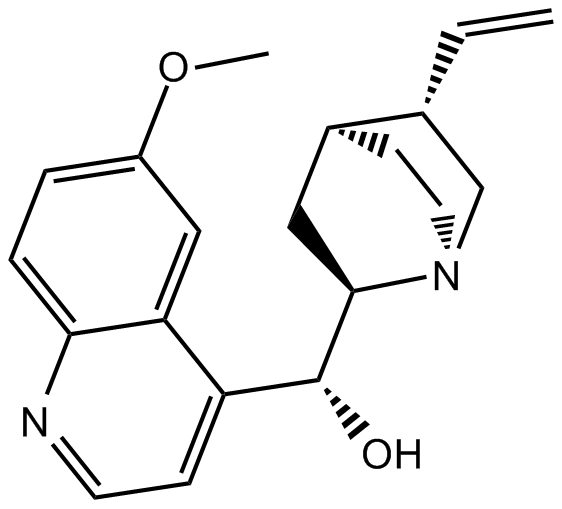
-
GC37062
Quinidine hydrochloride monohydrate
Chinidinhydrochlorid-Monohydrat ist ein Antiarrhythmikum, das mit einem IC50 von 19,9 μM auch ein starker Blocker des K+-Kanals ist.
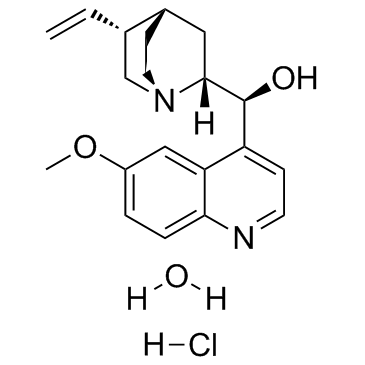
-
GC41455
Quinine
Chinin ist ein Alkaloid-Antimalariamittel, das MIC-Werte von 10 bis 500 nM für 60 thailändische Isolate von P. aufweist.
